Hired by Bernbach in the fifties.
Ran VW in the sixties.
Set up his own shop in the seventies.
Now in his eighties.
One of the finest Art Directors ever.
Len, before we start, I heard a rumour you grew up in the Bronx with Ralph Lauren?
Yes. In fact, I am still friendly with his older bother, who I first met pushing Ralphie in a baby carriage.
So it’s 1953, why become a huckster?
Why do you use such a derogatory word to describe my entering the world of classy design.
My first job was at L.W. Froelich, a pharmaceutical ad agency, where our messages were directed to the medical profession and good design was the norm.
You caught me deliberately using a provocative word.
The perception of Admen in the fifties came from films, where they would always be portrayed as shallow idiots.
E.g. ‘Let’s just run that idea up the flagpole’ – juror in ‘Twelve Angry Men’, an adman.
How did you know advertising could be intelligent, ethical and sophisticated?
Because I always had high standards to begin with.
Plus I’ve always despised verbal cliches.
Who was your hero, Paul Rand?
Sure, I admired Paul Rand.
Also Will Burtin and Erik Nitsche, and A.M. Cassandre, to name just a few of our Gods at the time.
I love those guys too, but to me Paul Rand is in a league of his own.
Sure. But does that mean that one cannot admire work that is being done in other parts of the world.
After a short stint at Grey Advertising you move to CBS Television, to worked with legendary designer Bill Golden. Didn’t he design the CBS eye logo?

Yes and no, he didn’t design the eye.
He thought of the idea.
It was actually a Shaker hex symbol on old barns to ward off evil spirits.
He asked graphic designer, Kurt Weiss, to execute it.
Why switch from design to advertising?
It’s all the same to me, trying to communicate in a simple, human way, trying to make a visual and words work together.
Do you remember the first time you looked at a piece of your work and thought “That’s as good as those good people do.”
It was quite early in my career that I began to realize that my message needed to not only be bold and daring, but it must stem from the truth… and touch people’s emotions.
Whether it makes them laugh or makes them cry, it should get under their skin in a way that is important or at least relevant to their lives.
At the risk of sounding pompous, I truly felt that my work was better than the best.
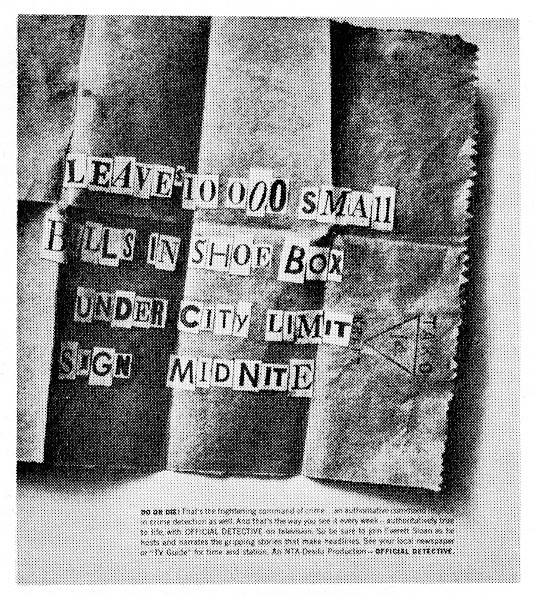

After a spell at Channel 13, you turn up at DDB in 1957.
DDB in 1957! What perfect timing, luck or planning?
I would “luck”.
When I left Froelich, I went to Grey Advertising, and was assigned to the NBC account, and won some awards for my work.
From there, I was wooed by Channel 13 to do their broadcast advertising. And once again, won a bunch of awards.
When Channel 13 decided to move their headquarters across country to California,
I applied for a job at DDB, where they had just landed the ABC account.
It was not only the right time and the right place, but with the right kind of ads in my portfolio, I got the job.
 Who were your first Group Heads at DDB?
Who were your first Group Heads at DDB?
There wasn’t a group system when I first got there. We showed our work to Bernbach.


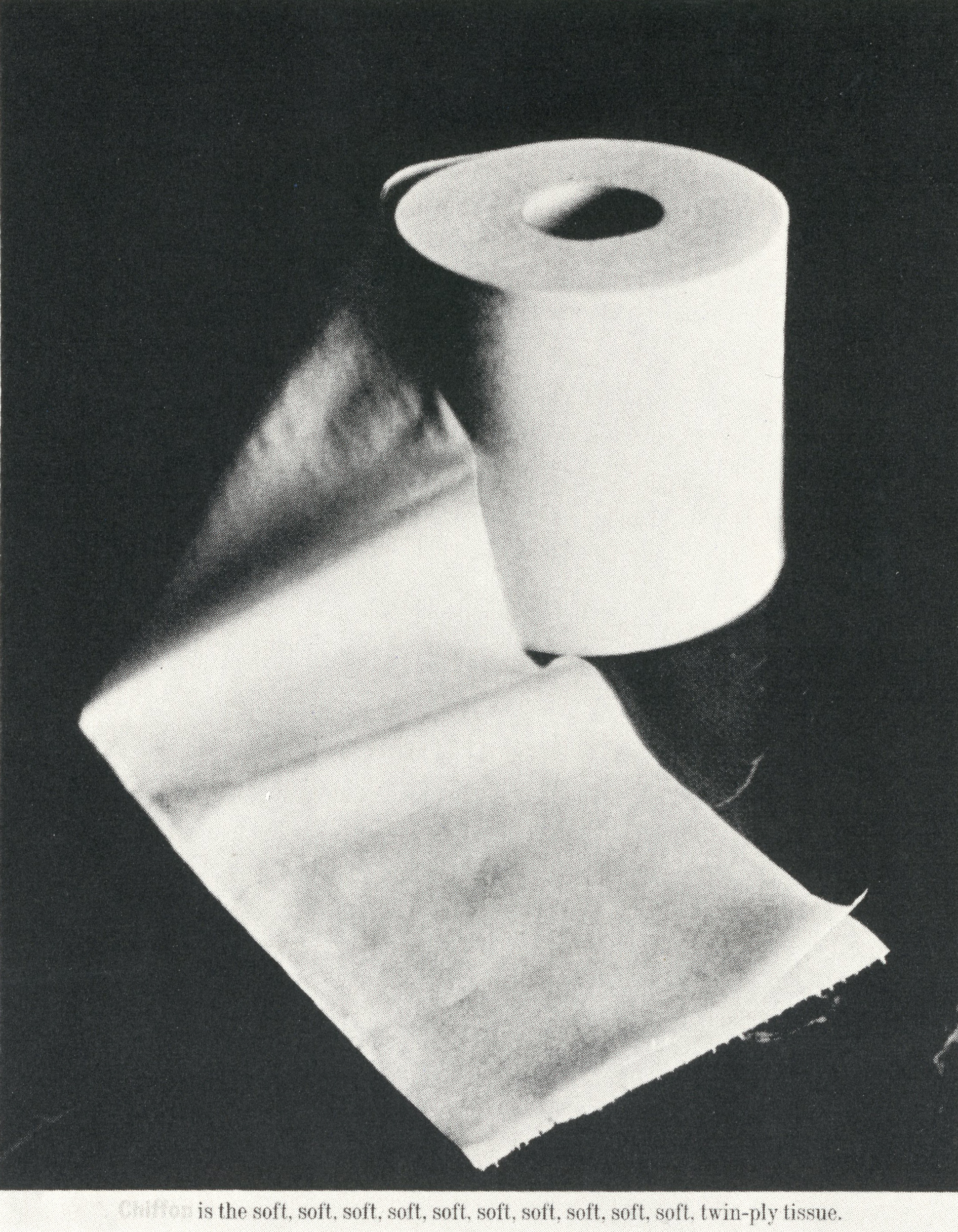
A few years ago I read the Mary Wells biography ‘A Big Life’, ‘A Big Head’ would’ve been a more accurate title for the book.
You worked with her in your early days at DDB?
From my point of view, Mary was a better politician than a creative writer.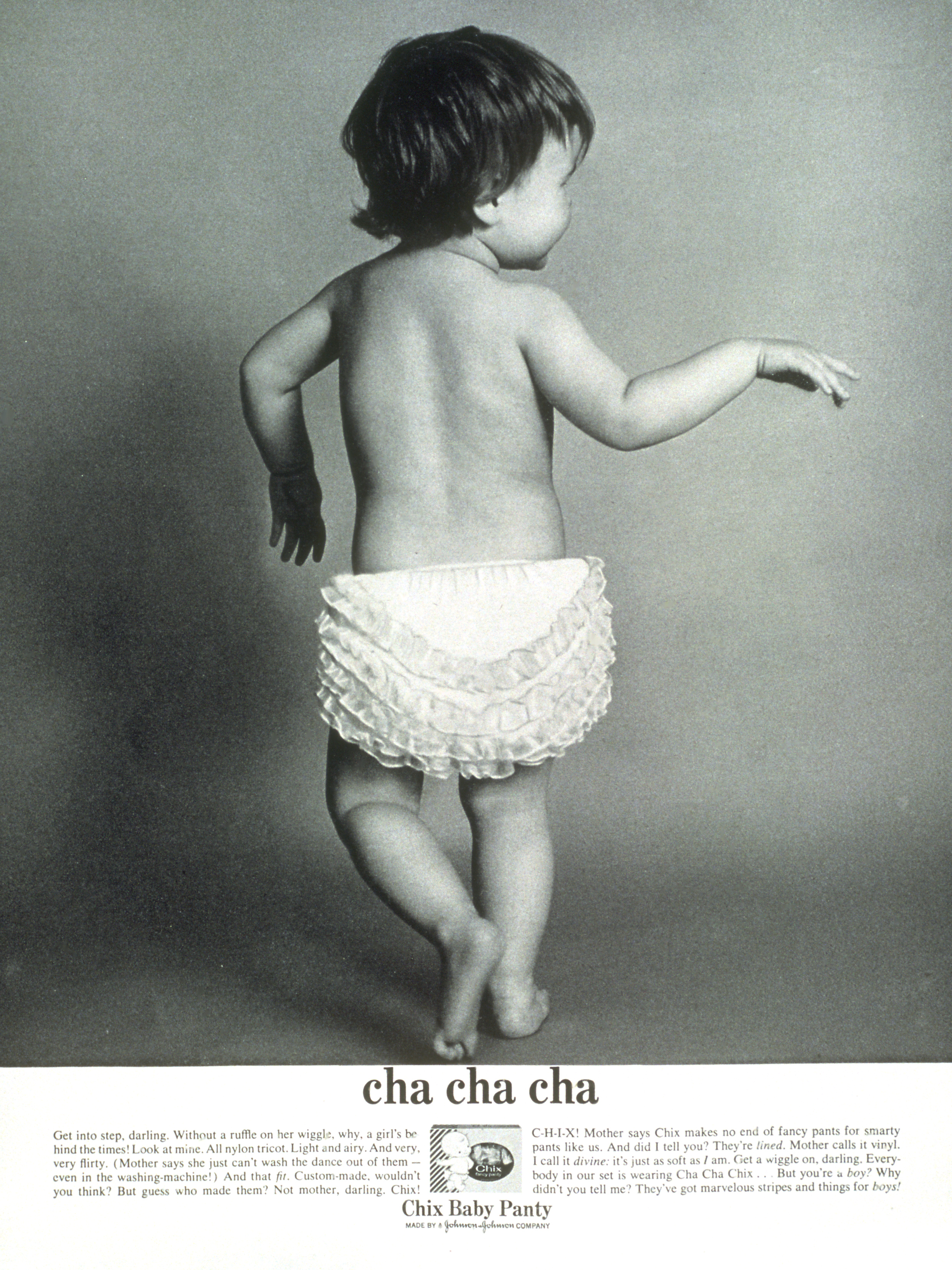
George Lois said that what made DDB great was that Bill Bernbach treated the top
Art Directors like Gods, resulting in a Art Directors feeling confident enough to push for a more visual style of ad.
Did Bernbach treat you like a God?
If being invited with my wife to the Bernbach home for dinner meant I was treated like a God, then the answer is yes. 
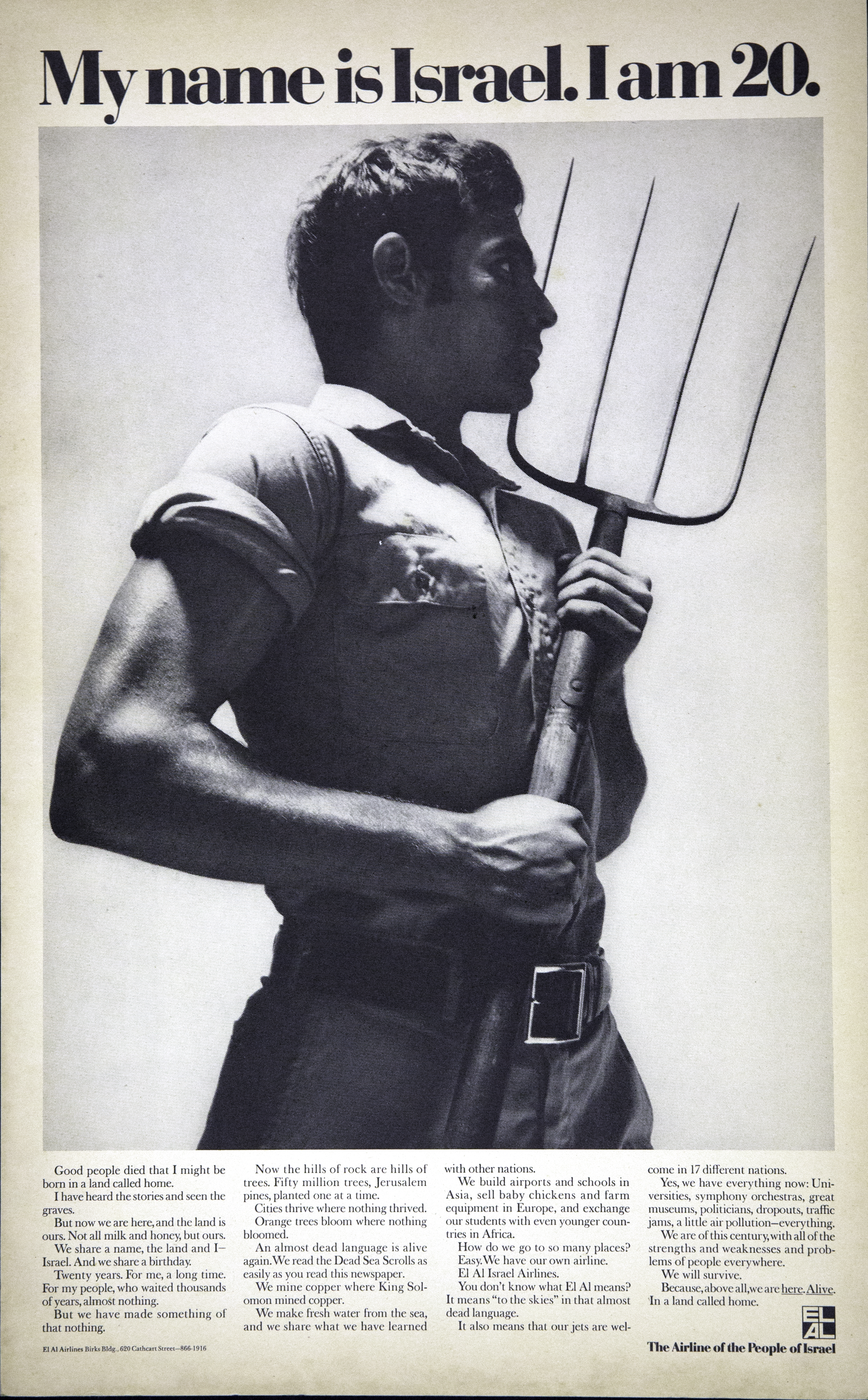
I don’t think any creative department before or after has been stuffed with more talent than DDB New York in the sixties.
But usually talent comes with strong opinions and egos, was DDB political?
I can truly say that I didn’t feel the politics. It may have existed but I focused on turning out the best possible work.
In those days you guys didn’t have a creative road map, no annuals of great work to learn from, you were literally making the rules up as you went along?
That’s true.
What was Bill Bernbach’s vibe around the agency?
That man really kept you on your toes, good wasn’t good enough.
It had to be fresh and original and in a good taste every time.
When he OK’d an ad creative people would yell in the halls with unbelievable pride “Bill loved it”.
I’ve only heard it referenced as a wisecrack, but twelve years after World War Two, Doyle Dane Bernbach, a Jewish agency, starts selling a car commissioned by Adolf Hitler.
Incredible, imagine an agency in New York now, founded by Kurds, selling a car commissioned by Sadam Hussein?
Did you ever question it?
Sometimes I did…especially when I would visit the VW plant in Germany.
But I overcame that because Helmut Krone and Julian Koenig had done an amazing job of making the VW an American icon.
In 1962, along with Bob Levenson, you are put in charge of the most famous creative account in the World; Volkswagen, replacing Helmut Krone.
Bill Bernbach came to me and said, “Len, I’ve got a great assignment for you. It’s one of the most important assignments I could give to anyone.”
I thought it was a great new account that had just come into the agency, I thought this was going to be an exciting thing for me, I’m going to be able to style a campaign, create brand new idea that had never been done before.
He said, “Len, I want you to take over from Helmut Krone on the Volkswagen campaign”.
Helmut, as you know, had been the guiding light behind the Volkswagen campaign.
It was the most talked about campaign inside and outside the advertising industry.
You couldn’t go to a cocktail party without hearing people talk about VW advertising.
It was a thrilling thing to hear — until I learned that I would now have to carry the ball.
I would have to continue the greatness of the campaign.
What was I to do? Was I to come into the account and foolishly make changes? Change for the sake of change? Prove my individuality at the expense of the account and the agency? No, that was wrong.
What was I supposed to do? Copy Helmut Krone? Work like Helmut Krone? No, that was wrong too. I had to find an area that made it appear as if the account had never changed hands yet it was me, not Helmut Krone.
Helmut works one way. I work another. I began.
Helmut Krone. Genius or giant pain in the ass?
Probably both, depending on who you talked to.
I know for a fact that Bill Bernbach greatly admired Helmut’s creativity but has been known to have said “Helmut is permanently imbedded in my x-rays”.
He made him ill? He still carries the scars?
“Imbedded in his x-rays” is a figure of speech implying that Helmut was difficult.

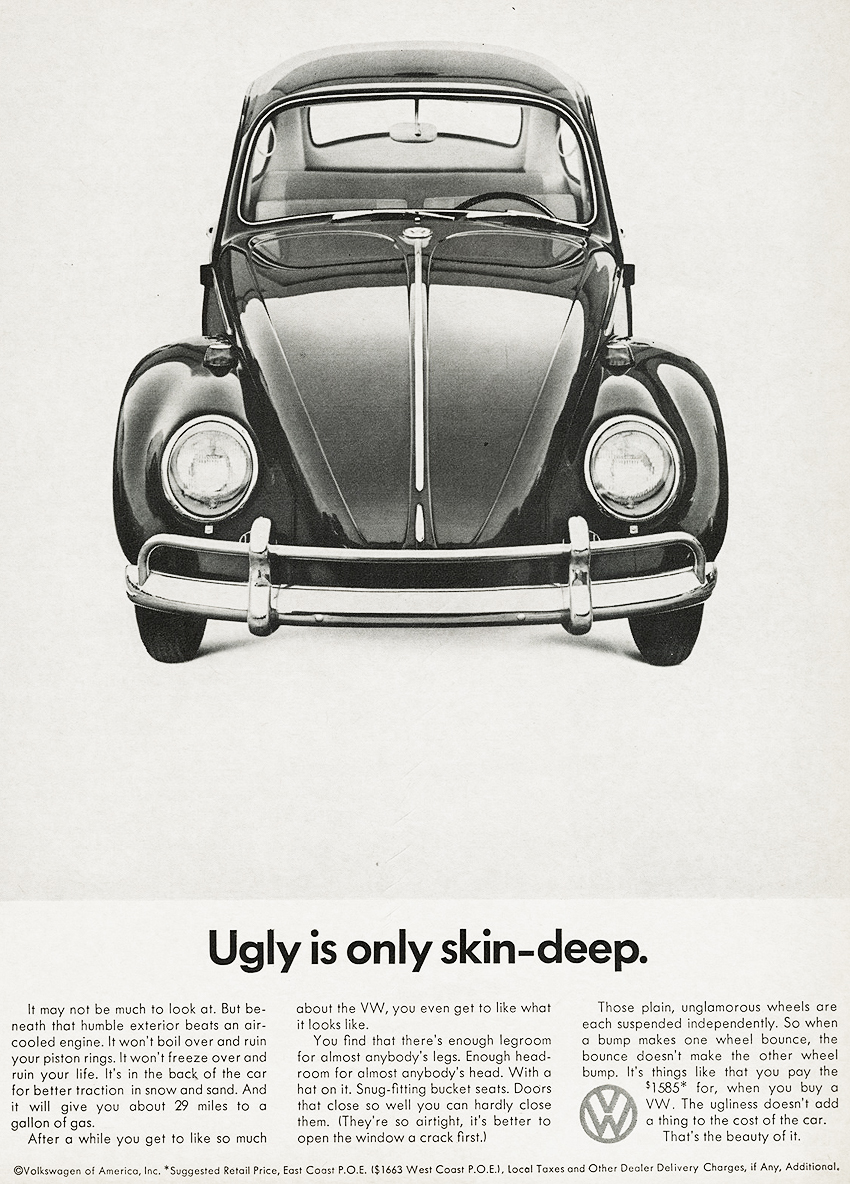



You and Bob Levenson in the swinging sixties. You don’t look like you’re embracing it; no kaftans, protest signs, L.S.D?
Our work was breakthrough and avant-garde but I guess our looks were pretty square.

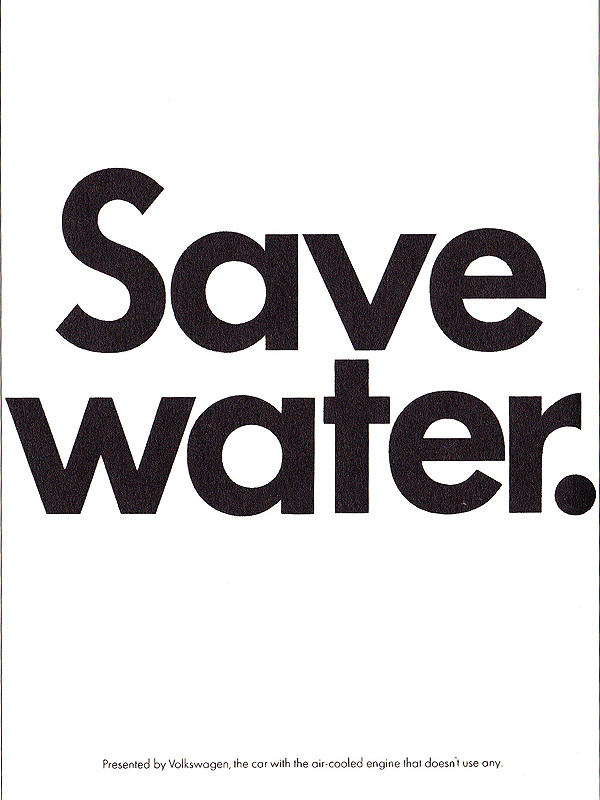
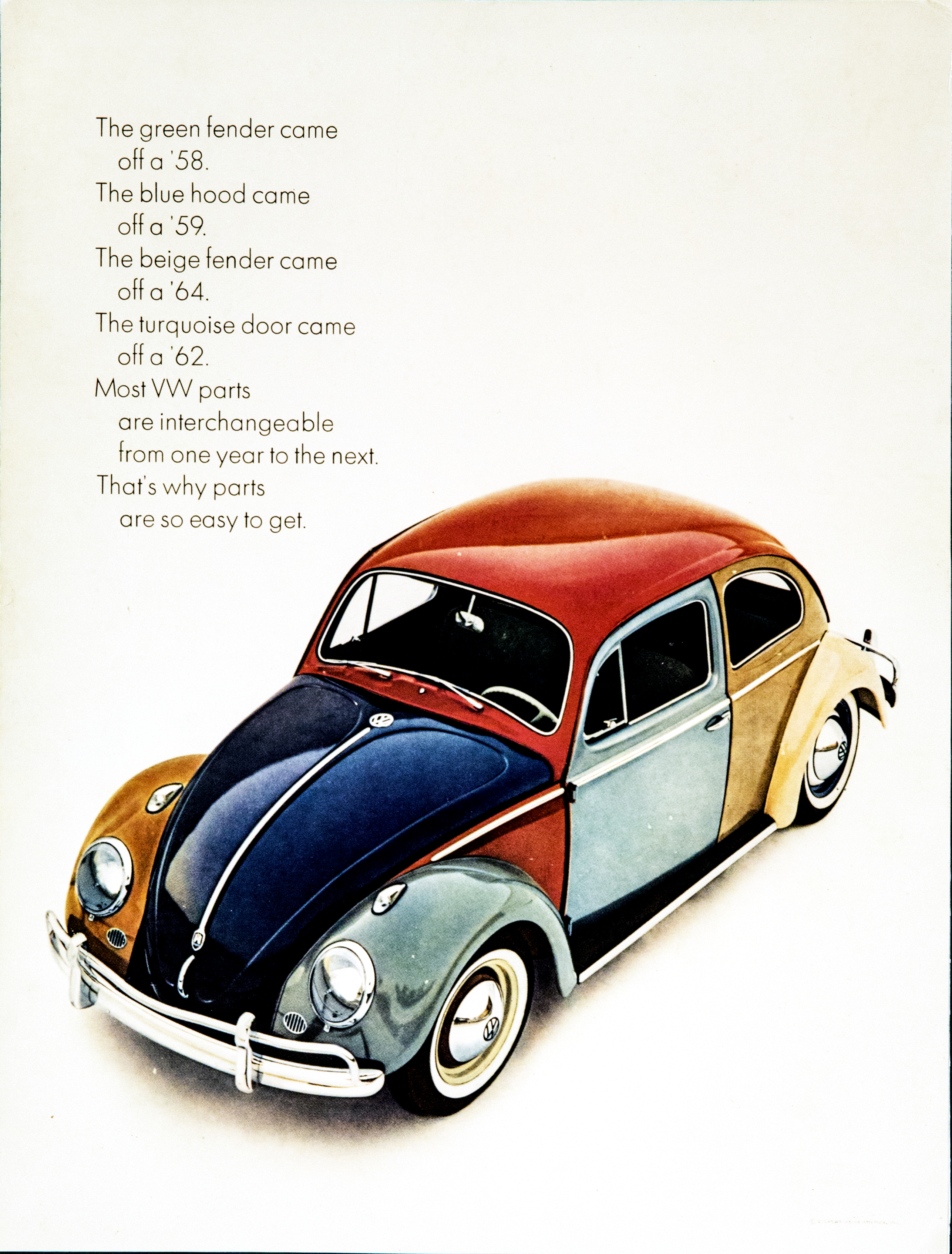 ‘Green Fender’One of the few ads I would pin to my wall.
‘Green Fender’One of the few ads I would pin to my wall.
How did you get them to run it without a logo?
The dramatic photo of the multi-coloured VW was more memorable than any logo. In fact, the logo got in the way. The client agreed with me.
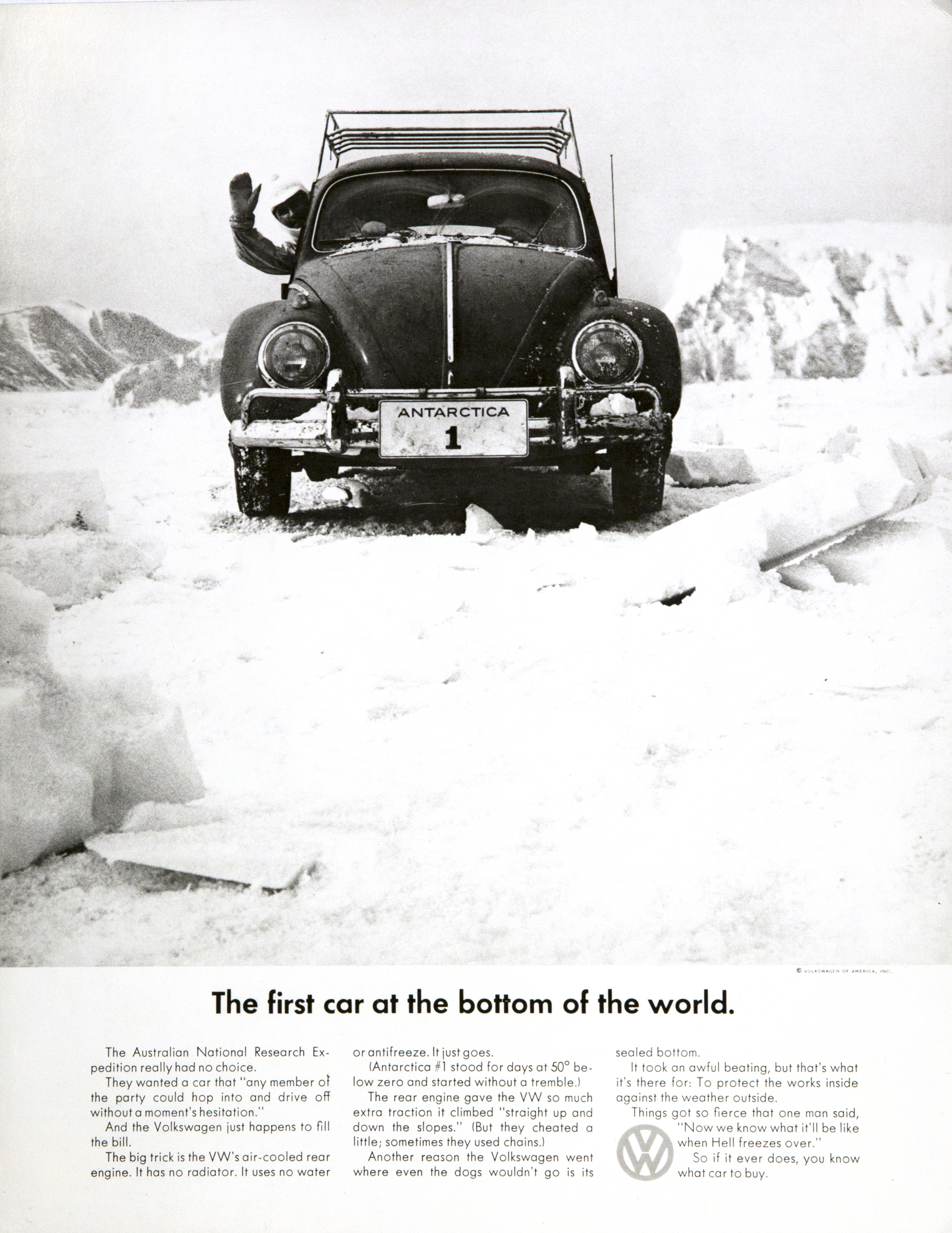
A previously little known name turned up in the updated edition ‘Remember Those Great Volkswagen Ads?’, did you work with Si Lam?
Yes. Si was Creative Director of DDB Los Angeles where he was responsible for most of the VW outdoor billboards.
‘DO THIS OR DIE’. Probably more relevant today than when it ran, forty years ago.
Certainly so.
From what I’ve read, Bill Bernbach was a Saint?
Yes. He was a most unusual man who knew just how to get people to rise to their fullest creatively.
What were Doyle and Dane like?
Mac Dane was a wonderful gentleman, he related well to just about everybody whose main responsibility was the financial health of the company.
Ned Doyle had a great sense of humor…loved his wine and loved his women.
How many Hall of Fame Writers have you partnered?
Ron Rosenfeld, Bob Levenson, Dave Reider, Phyllis Robinson and Mary Wells.
That’s greedy.
Do you remember a young British writer in your group, around 1967, called David Abbott?
Yes. I recall our kidding him about the clothes he wore, his stuffy attire, he looked very British indeed.
As I recall, quite formal, with a rather handsome tie.
Just not like the rest of us.
I also recall he was a good sport about the ribbing we gave him.
I think he ditched the tie, because we never saw it again until DDB’s Christmas party the following year.
However, I do recall being aware that he was quite talented.
Is it true that you asked Bill Bernbach for the Better Vision Institute brief?
Yes it is true. I did ask Bill Bernbach for the brief.
To make it clear, the Better Vision Institute was made up of an association of optical lens and frame manufacturers who pooled their funds to get people to have their eyes examined more often, in order to sell more frames and eye glasses.
Their theme was “Join the 20/20 Club”, it was merely a worthless slogan.
Without modesty, our stroke of genius was to disguise their motives and have it appear like a public service campaign with all the power to go with it.


Your writer on this ad, Leon Meadows, said of ‘No ad I can recall ever brought me greater satisfaction, both in the doing and in the results, than this one.
Getting the parents’ consent, since Anne Flynn is a real child named Anne Flynn took some doing, Anne’s parents were understandably afraid the publicity, (Life Magazine), might cause their child serious embarrassment at the hands of her friends.
But, in the end, the Flynns saw that the good this ad could accomplish far outweighed their personal misgivings.
They were right. The ad elicited a great deal of heart-warming reader response. From parents who were encouraged to go ahead with operations similar to Anne’s. And from parents who were immediately motivated to make appointments for their children with ophthalmologists or optometrists.”
The parents came to realise that by showing a photograph of their daughter prior to her surgery, and stating clearly that her condition was corrected, would have great value.
 Had you ever seen a photo deliberately printed out of focus before you did so?
Had you ever seen a photo deliberately printed out of focus before you did so?
I don’t believe I ever did.








How long did you work with the Better Vision guys?
From 1962 -1966 we did approximately 65 ads that ran in Life Magazine.

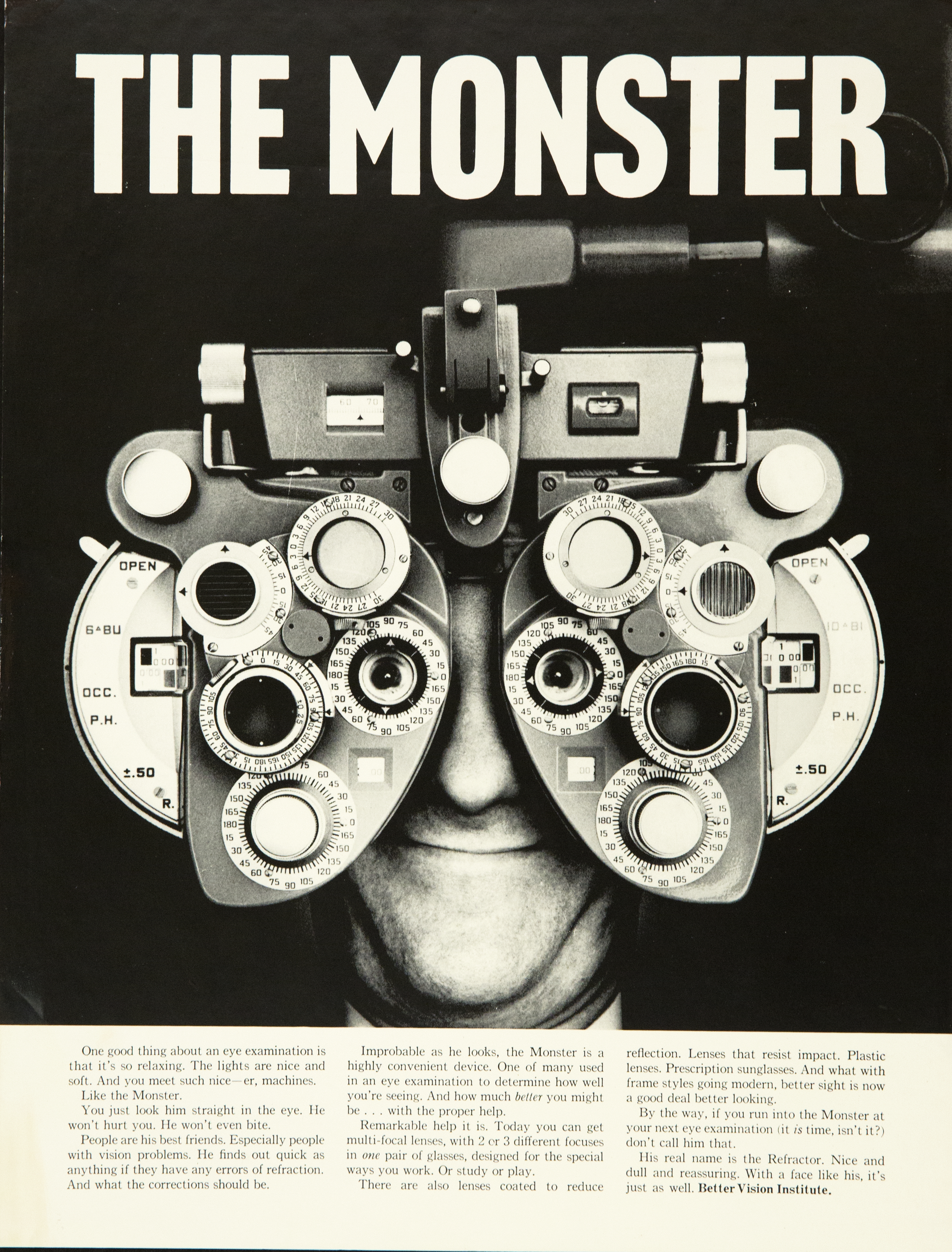
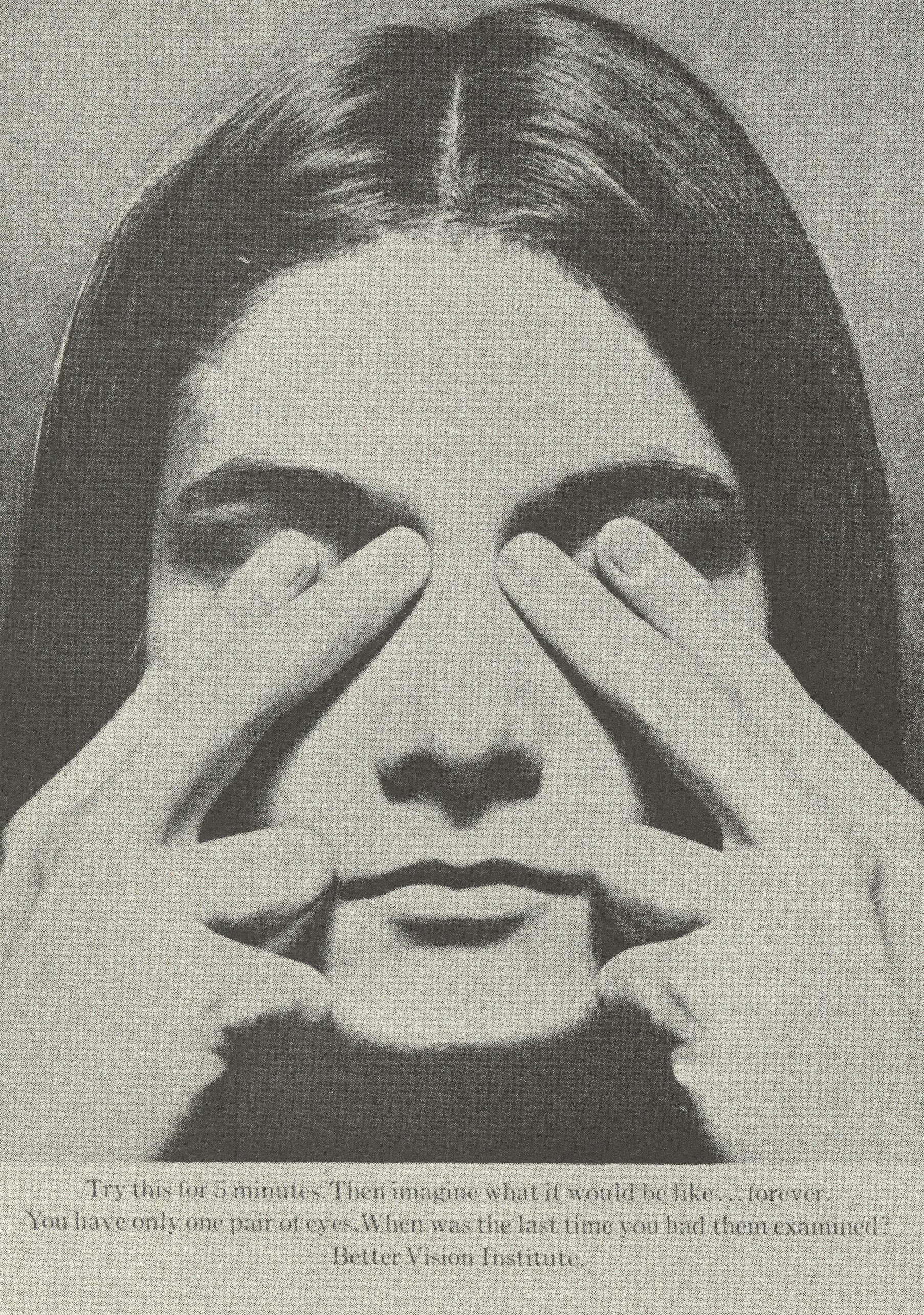
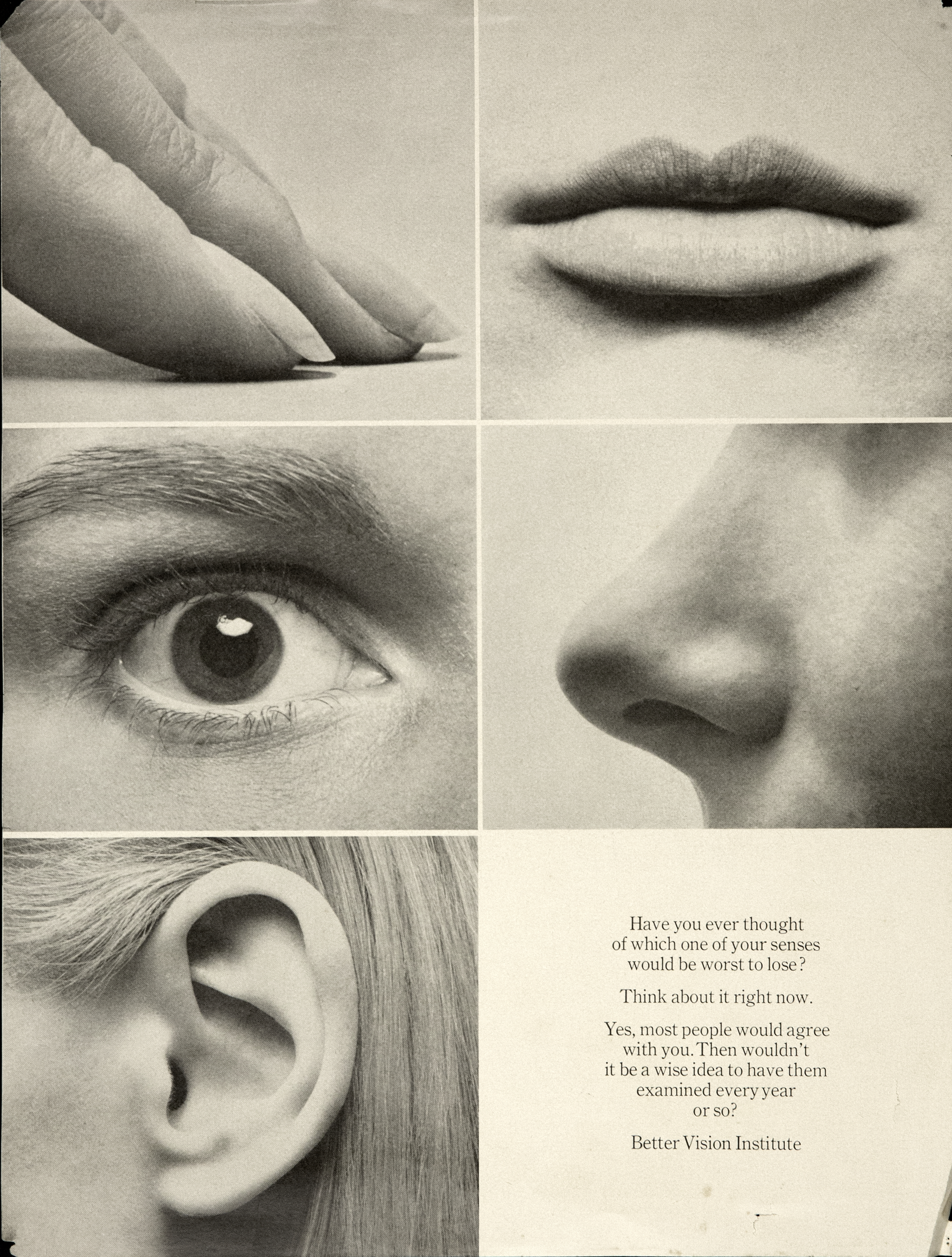

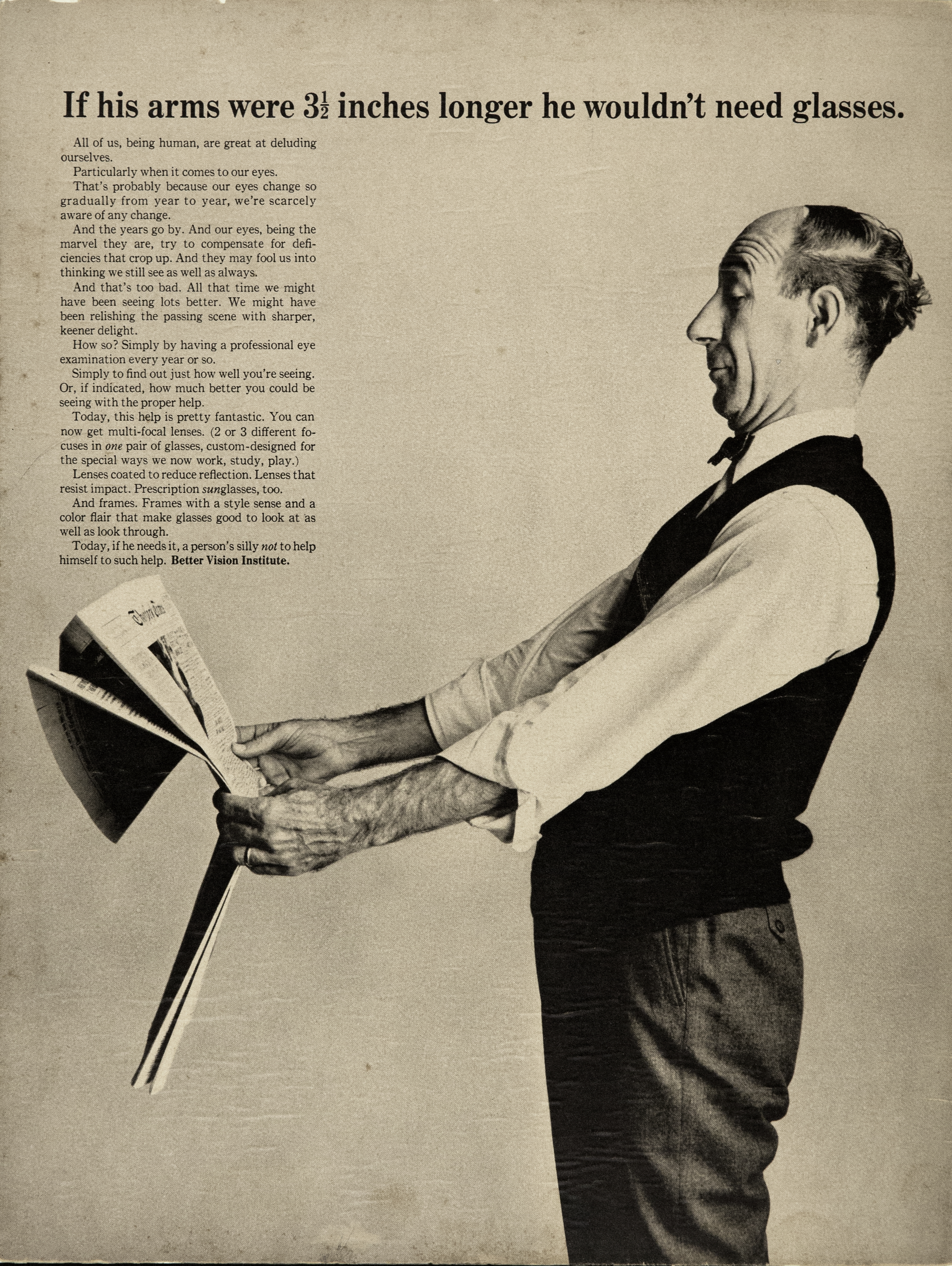

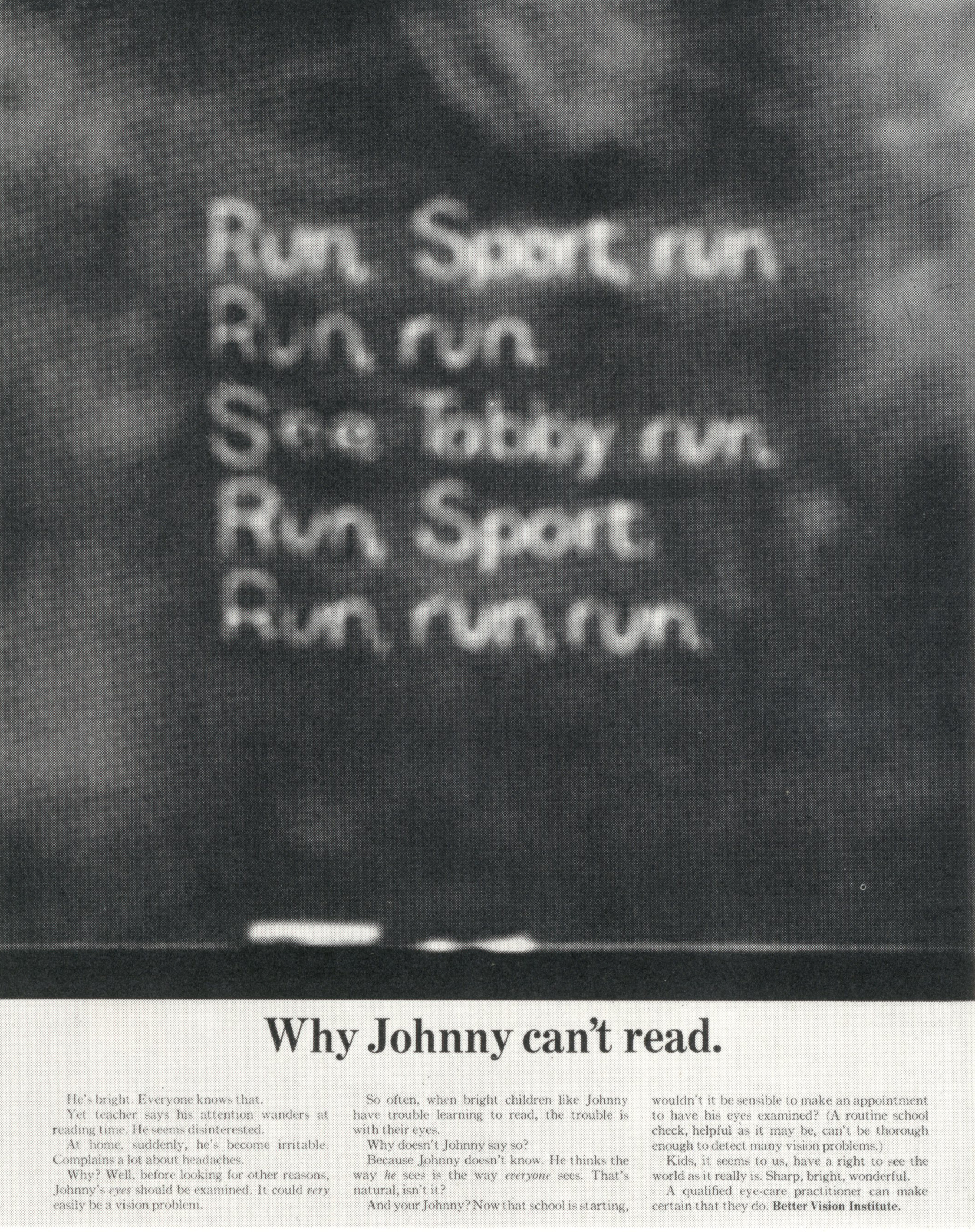


 Most clients only want to talk about themselves not pay for public service messages, but it must’ve transformed Mobil’s perception pretty quickly?
Most clients only want to talk about themselves not pay for public service messages, but it must’ve transformed Mobil’s perception pretty quickly?
The amount of letters received from the public on this campaign are phenomenal.
Mobil had to set up 8 secretaries to handle all the mail coming in.
There were 10,000 letters the first week alone, congratulating Mobil for their interest in the public interest.
Many of the letters included torn-up credit cards from competing oil companies with requests for Mobil credit cards to be sent to them.
Newspapers called us and asked if they could run the ads for free.
Editorials quoted the ads. Life Magazine did a feature article on the Mobil television commercials.
We knew we had hit on something important.
Again we learned — give the reader something he’s interested in…and he’ll be interested in you.
How did you make the leap from producing run of the mill ads about Mobil to the more compelling messages about whether the public lives or dies?
President Johnson was very involved with forcing new highway legislation through Congress as Ralph Nader’s book “Unsafe at any Speed”, blasting the automotive industry for unsafe practices, was becoming more well known. In other words, the subject of highway safety was in the air.
Interesting shoot to be on?
Well, we had the statistics to prove that a crash at 60 mph was like a car driving off a ten story building.
So first we had to find a ten storey building with a big area to land the car, like a car park.
We went to L.A. because we figured they make films there, so we’d have more chance of them letting us throw some cars off a building.
We eventually found the perfect building, they charged $4000 and the cost of filling in the holes the cars would make.
We hired some scientists from U.C.L.A. to work out how to make sure that the car would hit the ground head on.
We brought three identical cars to the shoot.
The first one, we flew up to the roof by hanging it from a helicopter and placing it on a cantilever.
We also had a huge crane parked down below in case we needed it to drop the car head on to the ground.
The U.C.L.A. guys did all their homework and gave us back the calculations, we threw the car over, and it flipped over, it landed on it’s roof.
We’d forgot to tell them we were taking out the engine, for safety reasons, so the car was lighter.
Then we weighted the car down, it worked perfectly, head on.
We had our film.
The third car was a back-up just in case we goofed with the first two cars.
We had so much fun, we threw the third car off the roof just for the hell of it.


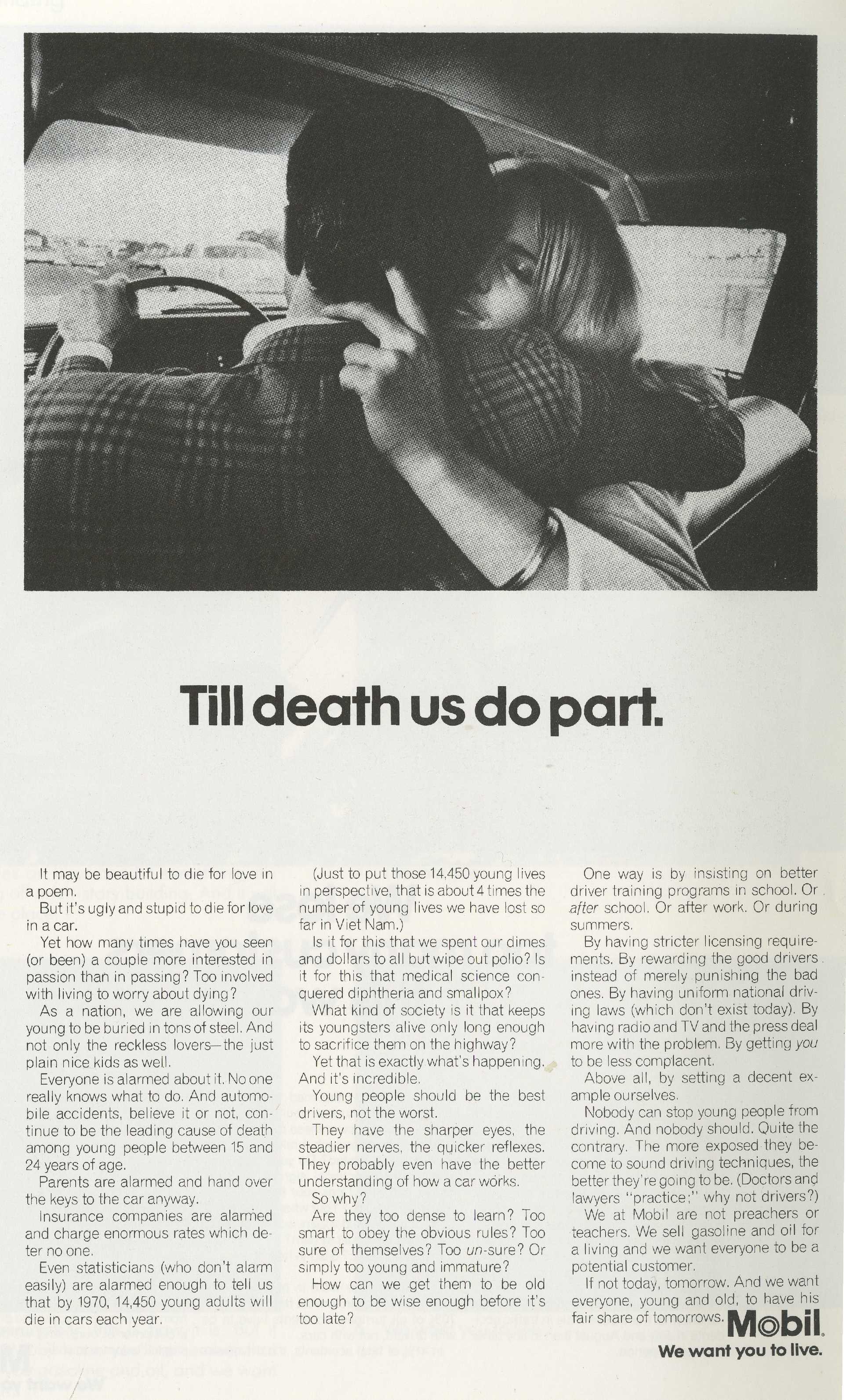


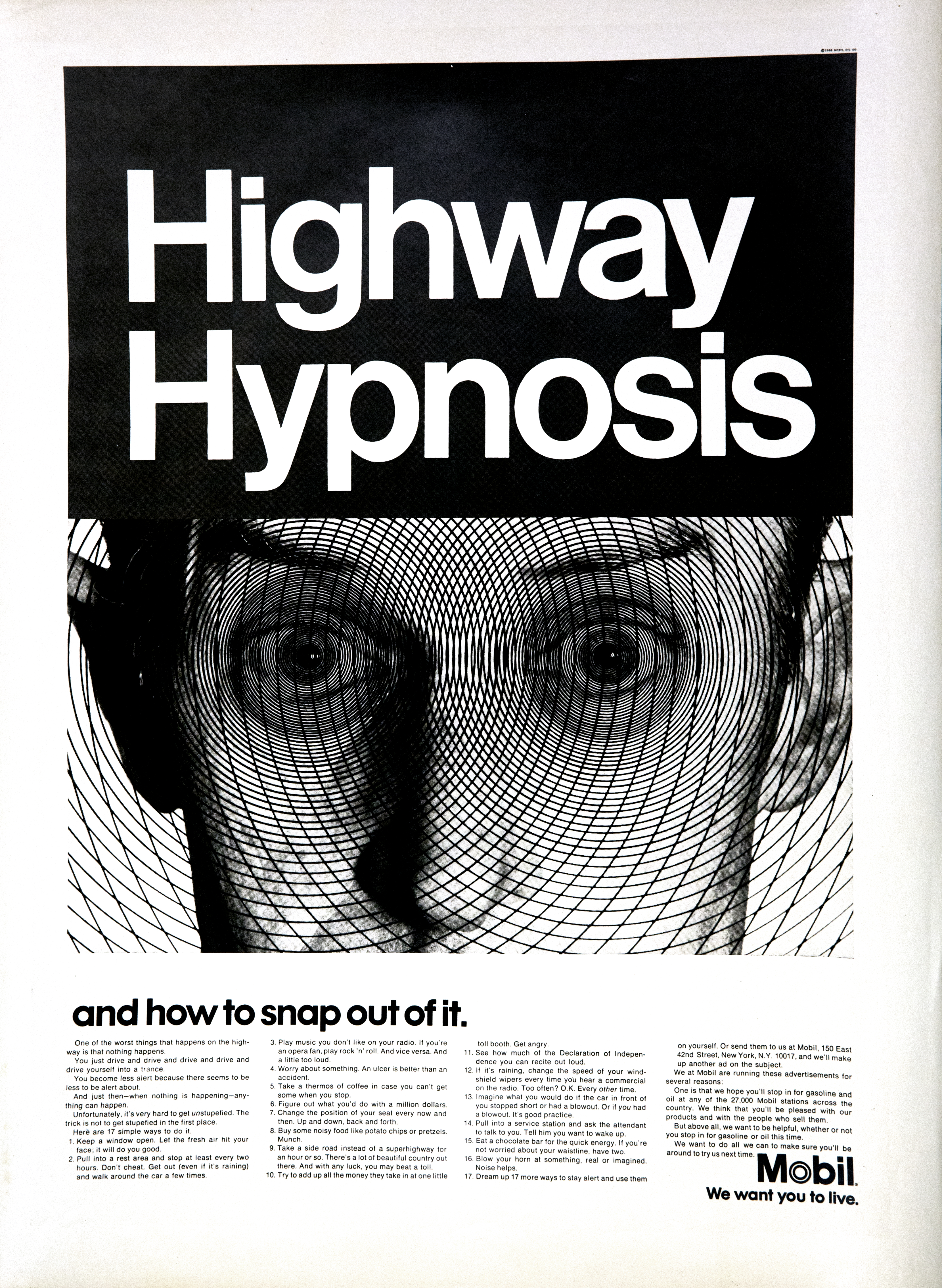
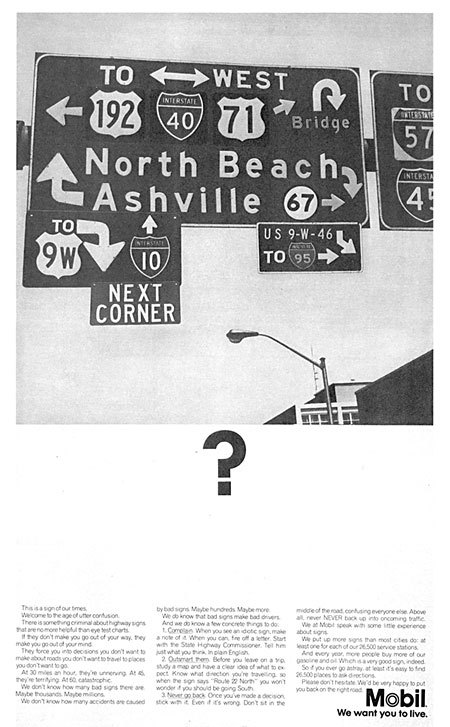



 This ad started very differently?
This ad started very differently?
I’ve always wished that the “Bastard” ad had run instead.
After approving the ad, the client chickened out the last minute.
I was startled by the article you uncovered.
Bob Levenson and I were returning from a Volkswagen visit to Germany.
About an hour after taking off on this early morning flight, President John F. Kennedy was assassinated, along with all the possible international conspiracy fears.
We later learned that our pilot was radioed the news and decided it was too frightening to announce in mid air.
My wife, Mickey, who was waiting for Bob and me at the airport in New York, broke the startling news to us. We were probably amongst the last people in the world to have heard about what had occurred.
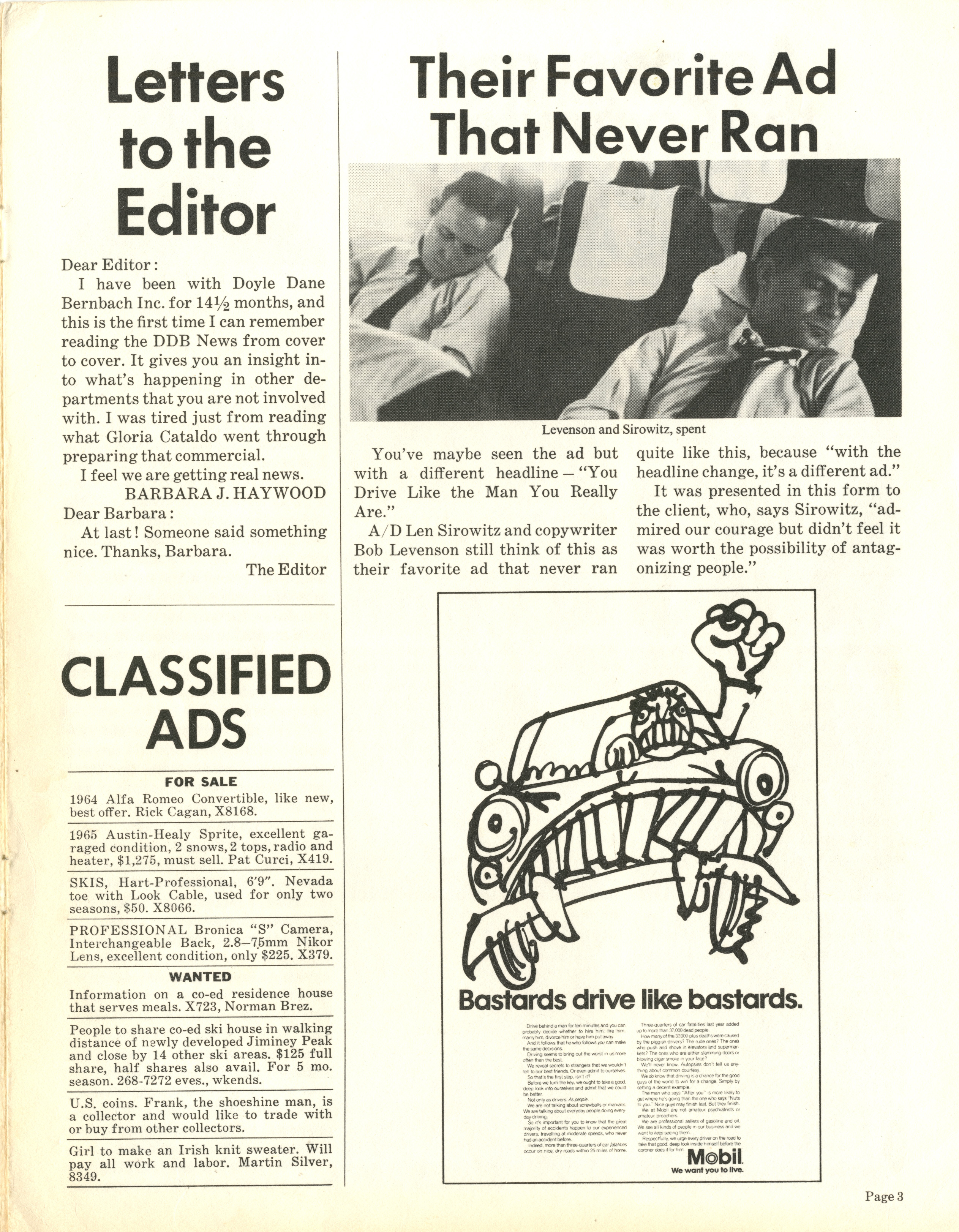



 Weren’t you supposed to write a campaign celebrating Mobil’s 100th instead of all this stuff about saving lives?
Weren’t you supposed to write a campaign celebrating Mobil’s 100th instead of all this stuff about saving lives?
That’s right, DDB didn’t have the oil and gasoline account, we’d been hired for the sole purpose of promoting their 100th birthday celebration.
At the first meeting we had with Mobil, they unveiled a new logo being proposed by Chermayeff & Geismar, a good design firm.
It celebrated them being in business for a hundred years, and inside the red ‘o’ was placed ‘1866 -1966’.
Mobil were thrilled with it and very excited to share it with us.
Well, they asked Bill what he thought.
“It looks like you just died” he said.
And of course he was right.
Had he seen it before, or did he just judge it instantly, off the cuff?
Instant!
The Sony ads are particularly human.
It was a very fine product.
We tried to find out everything we could about their products. We studied the competition. All the competing ads seemed to look-alike.
One ad blended into the next. One television set looked like another television set; one radio looked like another radio. Everybody was showing big pictures of their product and gave some information about it.
Sony was a new company and we wanted it to stand out.
We went exactly in the opposite direction of the competition.
We wanted warmth and humanity.
We also wanted to make our point by using an exaggeration of the truth concerning the television watching habits in America. (The All-American sport.)
But not just an exaggeration — one that amplifies the selling points of the product.
True portability, true lightness of weight. The ability to take the set where you want it to go — not to have to go where the set is. You own the set, it doesn’t own you.
American manufacturers were selling portables that really weren’t portables at all.
They were floor models with handles on top. American manufacturers were selling portables that had electric cords plugged into the wall.
Sony had a true portable-transister and battery-pack, lightweight and fun to use.
And that’s what we took off on.
 The Sony ads launch another ‘new page’, like VW and Avis.
The Sony ads launch another ‘new page’, like VW and Avis.
You can spot them a mile off, they looked like no-one else’s ads.
But, there was a penalty, you and your writer Ron Rosenfeld could use no more than twenty characters.
Never counted the characters but did create a graphic style that would have the most impact. 


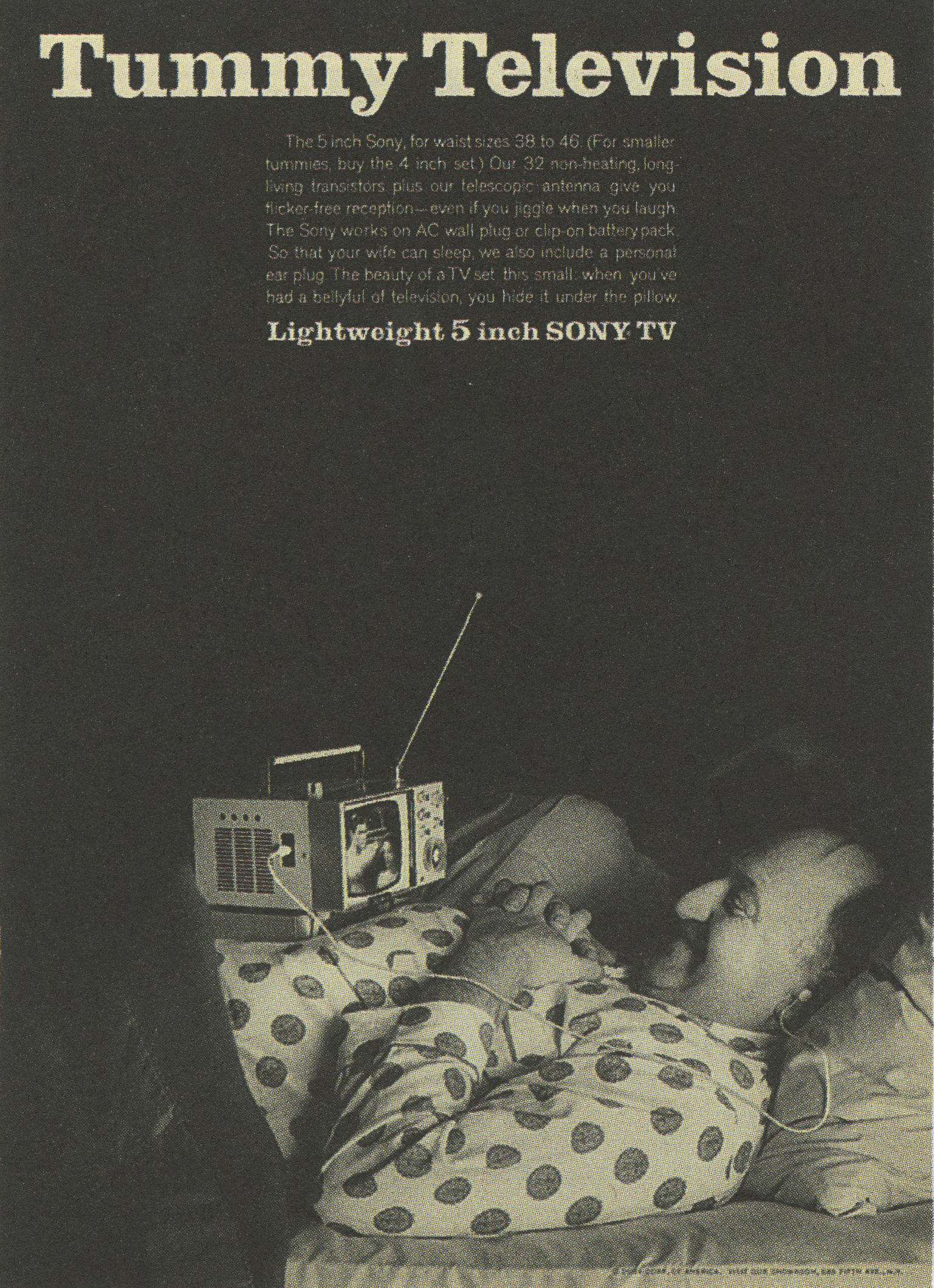






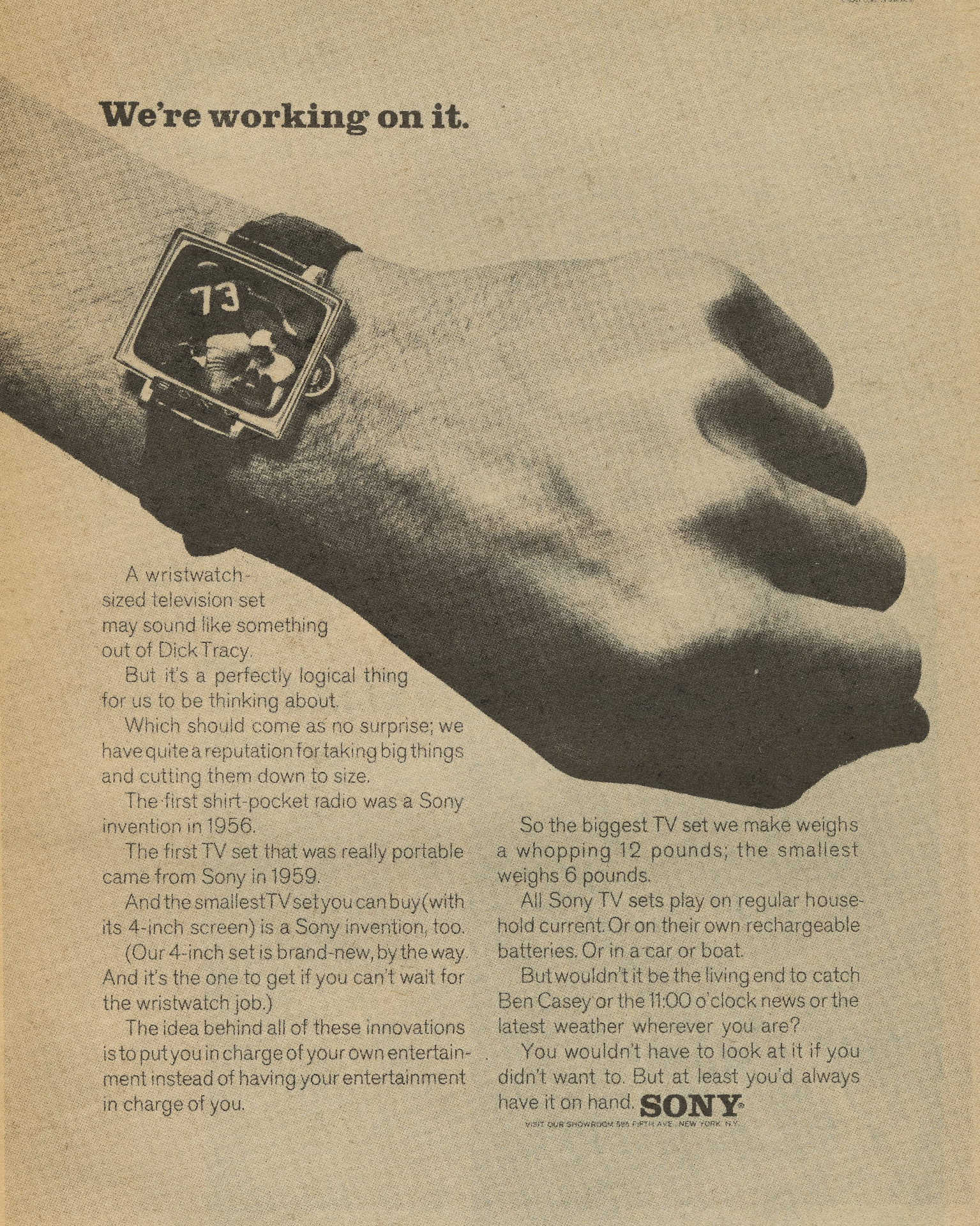 Back in 1966, you do an ad to let people know that Sony are thinking ahead, they are a future facing company.
Back in 1966, you do an ad to let people know that Sony are thinking ahead, they are a future facing company.
To illustrate this you try and dream up the most shocking, silliest, most pie in the sky product you can think of.
Cut to 2015, it goes on sale at your local Apple store next month.
Hard to believe but true.
You were voted No.1 Art Director in 1968 and 1970, did it make you chill out or become arrogant?
Ad Weekly conducted two national polls of the advertising industry and then published the results.
It was the only two times they ever did it.
As a result of all the awards I collected while at DDB, I truly felt that I deserved that astonishing recognition.
My wife tells me that it didn’t make me a terrible person.
It probably gave me the drive to start my own agency.
Why leave heaven, or DDB New York, as it was known then?
I was 38 years old at the time and thought…If I could do this for someone else, why not take a stab and do it for myself?
Harper Rosenfeld Sirowitz. Was there no way of sounding more Jewish?
Yes, If we called it Horowitz Rosenfeld & Sirowitz. Heh, heh.
Marion Harper, former President of ‘Reckless spender’, ‘Obsessed with formulas to pre-test ads’, ‘Interested in growth at any cost’, ‘Worked to make research a scientific advertising tool’.
Doesn’t seem like a natural fit, how did you come to set up an agency with him?
Well, it’s a long story.
Firstly, I remember talking with Bill Bernbach one day, he was making a point about people being trapped by fear, being too afraid to follow their instincts.
I took this, rightly or wrongly, as him suggesting I should set up my own shop.
Next, I bump into an old friend on the street, Hubert Graff, who had just been given the job of running the Marketing for Swissair.
‘What Agency shall I get to do Swissair?’ he said, ‘Mine’ I said.
Instinctively.
And at this point you didn’t have an agency?
No, nothing, I was at DDB.
Then, a while later I bumped into my old writer Ron Rosenfeld, who said he was setting up an agency with Marion Harper.
Marion had all kinds of contacts and big schemes.
I was in.
What did Bill Bernbach think about you setting up an agency with Marion Harper?
When I told him he just put his head in his hands.
How did it work out with Marion?
It didn’t, he was gone after about six months.
His promises and schemes didn’t materialize.
In fact, the first business we won was Swissiair.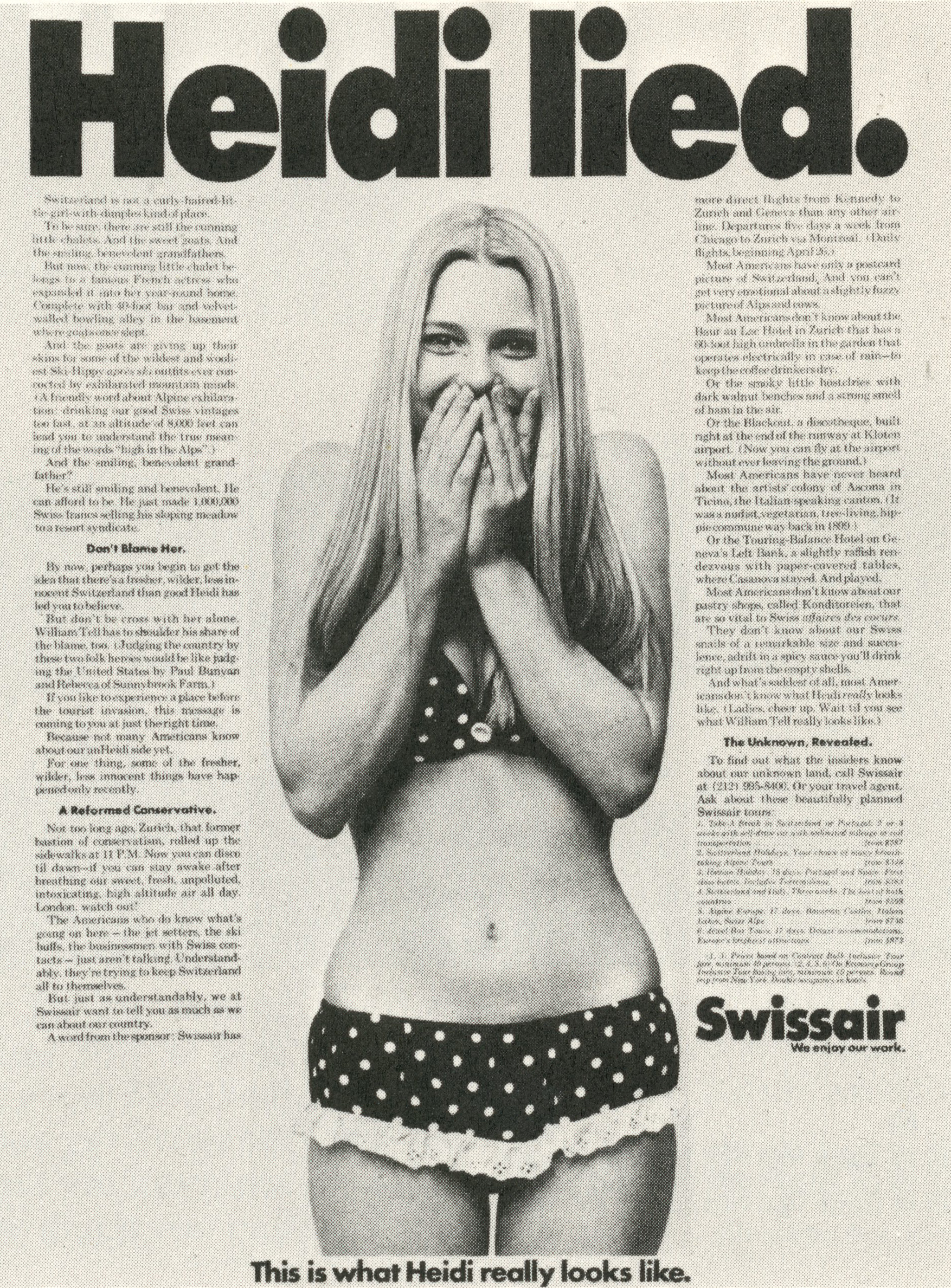
Yeah, I saw the ‘Heidi Lied’ ad, I wasn’t sure what it was about? And Heidi looks saucier than I remember from the books?
Yeah, he previous agency had run a lot of cutesy work about how sweet the country was, the food, the fresh air, etc, and all the ads ended with the line ‘Heidi wouldn’t lie’.
We wanted to shake it up.
How did you find running your own shop?
I liked it, I did it for long enough…25 years?
You and Ron have been described as ‘street guys’. Accurate?
Yeah, I guess you could call us that.
What did you look for when hiring creatives?
Talent and energy.
From Britain, U.S. Advertising in the seventies looks like a creative wasteland. True?
I didn’t have that perspective.
Lots of your work has a very ethical slant; ‘We want you to live’, the Better Vision Institute stuff even the DDB house ads ‘Do This Or Die’.
You’ve also consistently taken on ethical side projects.
I guess it’s my nature to want to put my creative ability to use for public service and issues that I strongly believed in.
How did you come to work with SANE?
They came to DBB for help.
It was at a time when the world was in a different kind of turmoil than it is in now.
It was at a time when the U.S. and Russia were testing Hydrogen bombs and if it continued it would contaminate the atmosphere.
It was at a time that China was developing their nuclear power and threatening to use it.
It was at a time when France was starting to explode their bombs.
SANE stands for a sane nuclear policy. It is composed of businessmen, educators, intellectuals and just plain people, who would like to contribute their time and money for the good of the world.
They asked us for help and we gave it to them at no cost.
They said please, let’s do an advertising campaign. Let’s get the public involved in this thing.
There is too much pacificism. Get them to write letters to their Congressmen.
Get them to force a test-ban-treaty throughout the world.
We said we would love to help.
I must tell you that it was one of the most exciting things to work on a product that is more than a product.
To employ all of your knowledge and all of your techniques in influencing the world.
It’s a rare opportunity for an individual who is not in a high government position or in a position of world influence to move people into doing things for the good of the world. Doing these ads was one of the most satisfying experiences of my career.
Norman Cousins, editor of the Saturday Review, took the ads to Khrushchev at the time to show him how the American public was behind the test-ban-treaty.
I’d like to believe the ads had a little something to do with the signing of the treaty.



Norman Cousins, editor of the Saturday Review, took the ads to Khruschev at the time to show him how the American public was behind the test-ban treaty.
I’d like to believe the ads had a little something to do with the signing of the treaty.
How did you come to be involved in the Anti-War Movement?
My wife and I were always marching in the peace marches, it started with the Viet Nam war.
And it was intense.
Besides the protest marches in New York and Washington I was involved with creating powerful, full-page ads with Dave Reider for The Coalition for a Democratic Alternative which positioned Eugene McCarthy, against Hubert Humphrey, who then served as VP under Lyndon Johnson and was tainted by Johnson’s disastrous Vietnam policies. 

I would imagine the ‘FOR WHAT’ ad was very shocking at the time, it doesn’t pull it’s punches?
It was a full-page in The New York Times, and it was very shocking, especially the line “THE FIRST STEP: JOHNSON MUST GO”
I set the type one night, and the next day I just looked at it in my hands, I was shaking, in those days you’d never say that about your President.
It was always your President, right or wrong.
Dave Reider did an amazing job with that copy, it’s worth reading, I love the last line ‘The time has come for the quiet, long-suffering citizens to stop stewing and start boiling.’
How was the ad received?
Well, it’s a long story.
We have to go back to when Kennedy was assassinated, after that happened his VP Johnson was sworn in as President and Hubert Humphrey became his VP.
On the positive side, Johnson was very involved with forcing new highway legislation through Congress as Ralph Nader’s book “Unsafe at any Speed”, blasting the automotive industry for unsafe practices, was becoming more well-known.
In other words, highway safety was in the air.
To clarify events, let’s go back in time.
While it was Kennedy who had been responsible for sending military advisors to Vietnam, Lyndon Johnson resisted getting more involved with the war as he was about to run for his first full term as President against Barry Goldwater.
Goldwater was a right-wing, conservative Republican who took a pro-war position.
The Democratic National Committee then hired DDB to help create Johnson’s campaign.
I was not involved with that campaign but DDB did an amazing job of painting Barry Goldwater as a war mongering radical who if elected, would send the world into a nuclear disaster.
(The famous “Daisy Girl” commercial created by art director, Sid Myers, is
a shining example of the work done for that campaign.)
Now the other side of Lyndon Baines Johnson…
After Johnson and Humphrey won the election, Johnson became more and more involved with escalating the Vietnam war.
As the Vietnamese army (the Viet Cong,) became more and more successful and more and more American soldiers were wounded and dying in Vietnam, Johnson arrogantly declared that he would not become the first U.S. President to lose a “god-damned” war.
As his first full-term as President was coming to an end, he announced that he would be running for a second term.
And so, the underground anti-war movement began to swell.
Other Democratic alternatives began to oppose Johnson and his war mongering actions. The Coalition for a Democratic Alternative was formed to seek another candidate who opposed the war.
And that brings us to the “FOR WHAT?” ad.
As I previously explained, when Senator Eugene McCarthy, a relatively unknown anti-war candidate from Minnesota ran in the New Hampshire primaries against Lyndon Johnson, he took the majority of the Democratic votes.
This forced Johnson to go on national television with the following announcement:
“I shall not seek and will not accept the nomination of my party for another term as your President.”
The anti-war movement was beginning to build in America.
It was no longer the “long -haired crazies, the druggies, the dropouts from society”, but solid citizens, students, college professors, business men and women that were demanding an end to the insanity in Vietnam.
To get more and more good folks out to vote we created an event, called The Moritorium. Representatives of the anti-war movement, which included the Lt. Governor of Colorado, my creative partner, Dave Reider and I met in my apartment in Manhattan to plan the event.
The ads “Ring Bell To End War!” and “Fathers and Sons Together Against The War!” were several of the ads we ran.
The copy dramatically explains the course of action.
For me, personally, being directly involved in this momentous occasion was the thrill of my young life.
All in all, ‘FOR WHAT?’ was a pretty effective use of a full-page, but were DDB ok with DDB staff doing freelance ads knocking the President?
Sure, Mac Dane wrote us a cheque to give to the New York Times to pay for the page.
Because he supported the cause or you guys?
The cause, DDB was very, very liberal-minded place.
At the time they were working for the Hubert Humphrey campaign and journalists found out that a team from the agency that was pushing Hubert Humphrey had done this ad.
Bill was asked by the Humphrey guys to make sure it didn’t happen again.
He told them no, what his guys did in their spare time was their business.
The Hubert Humphrey business went elsewhere.
I like your ‘Dear Charlie’ approach, where did it come from?
From the late, great Bob Levenson, who profoundly said ‘whenever I write a piece of copy, I start by writing “Dear Charlie”. Then I write the copy. Then I cross out “Dear Charlie”.
That was Bob’s stern lecture on always talk to one person at a time.
I like your ‘Dear Charlie’ approach, it’s the polar opposite of Ed McCabe’s; stick ‘Schmuck’ at the end of the headline then peel it off later.
I never stop and admire the look of your ads. I’m too busy reading them.
As an art director I don’t take that as an insult.
My goal has always been to create simple, accessible messages that appealed to the human element and resonated personally with each viewer.
It’s a compliment. I’ve been on too many awards juries where there’s a clamour for a particularly cool looking campaign, and I’ll ask ‘what’s your favourite execution?’, instead of saying which idea, some jurors say things like ‘The blue one’ or ‘The one with the upside down type’.
They can’t remember what the message was, just how it looked.
What’s the biggest change in you witnessed in the ad business?
The use of a computer as a designer’s tool has done far more harm than good.
Choice used to cost money.
Every time you wanted to see a headline in a different font it would come with a bill attached.
A famous British Art director, called Paul Arden, was considered a maniac because he would want to see a headline in many different fonts, sometimes as many as seven.
Today, any art director can set a headline in tens of thousands of fonts. Free.
Has unlimited options helped creativity?
No. I believe it confuses it and a lot of wasted energy.
Ever seen a good ad from Britain?
Yes. I can recall a powerful ad featuring a profile silhouette of a male in his ninth month of pregnancy. I remember thinking it was great at the time.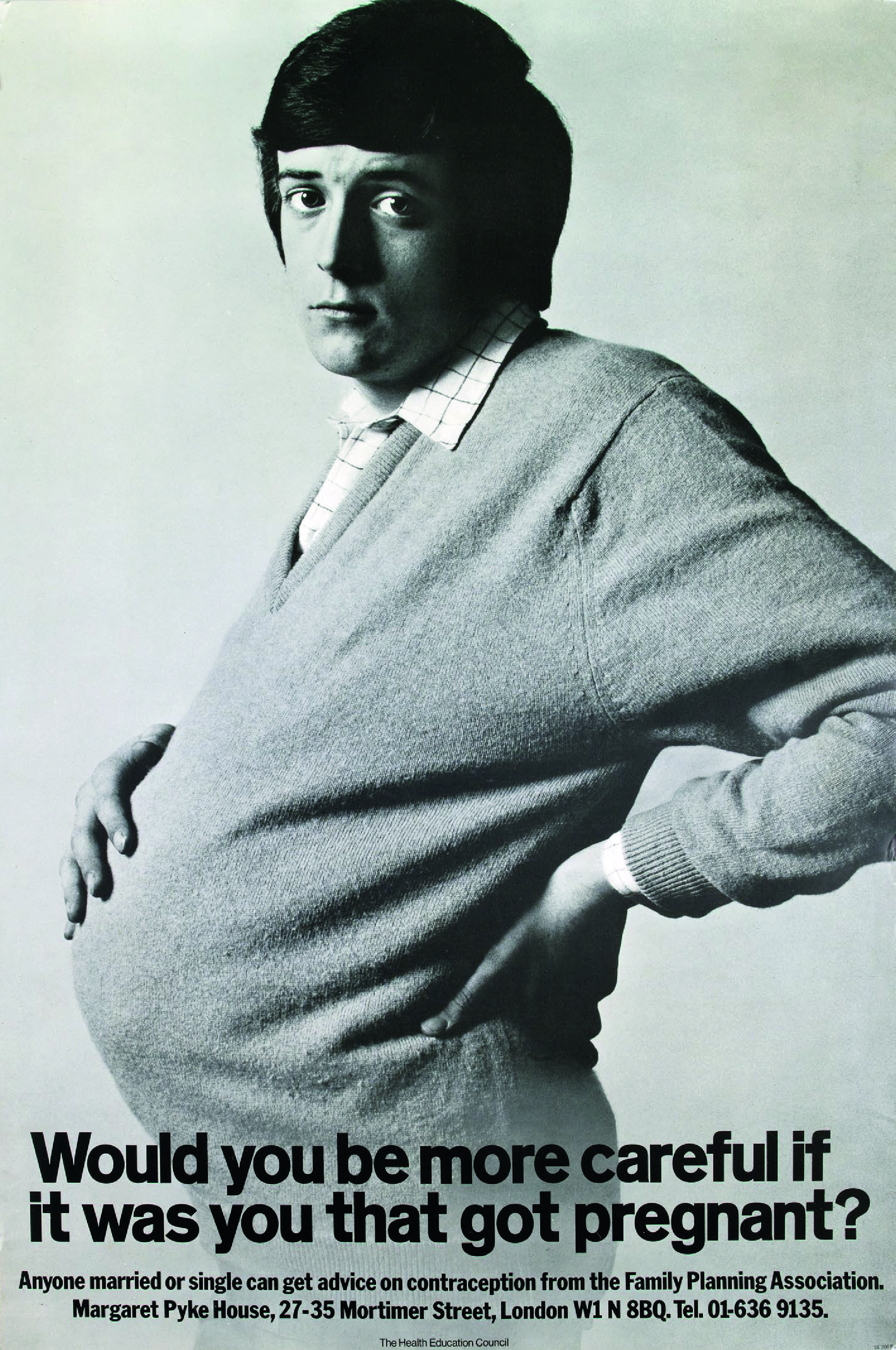
Do you ever miss those joyous ‘Got it! let’s make a car out of different colour panels!’ moments?
No. I found a substitute environment where I can let my creative juices flow at the Art Students League of New York where I create large format charcoal drawings from live models.

I know naming names is a bit taboo, but who’s the smartest person you’ve come across?
My wife of 60 years; Mickey, with her impeccable wisdom, has been my greatest sounding board ever since we met at the High School of Music & Art, forever ago.
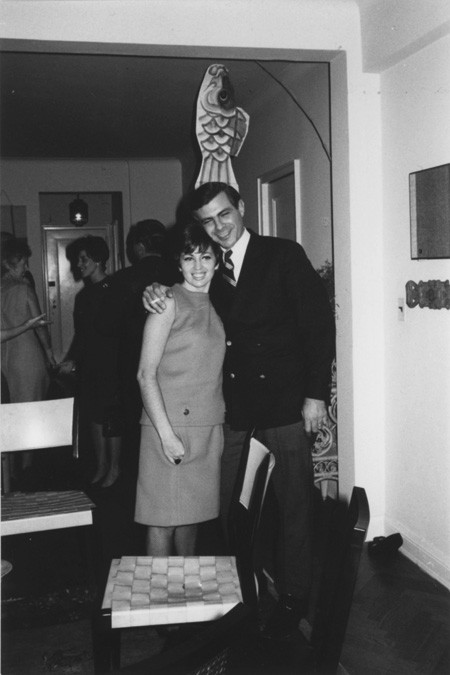
Name a DDB employee you felt never got the recognition they deserved?
I would say my old buddy, Sid Myers who did some wonderful work for El Al Airlines and the memorable “Daisy Commercial”. What’s the biggest change in you witnessed in the ad business?
What’s the biggest change in you witnessed in the ad business?
The use of a computer as a designer’s tool has done far more harm than good.
Tell me you haven’t, like many in our business, thrown out your beautiful, original proofs of ‘Green fender’, ‘Do this or die’, ‘George Shearing’, etc.
This might surprise you, but I have original proofs of every one of the ads you mentioned and lots more.
It delights me Len.
I don’t agree with those who throw it in the bin saying it’s all chip paper, (American Translation: Yesterdays Newspaper), it appears cool to adopt that view, but it takes a lot of staring at blank walls, mental blocks, negotiation, arguing, persuading, protecting and concentrating to create anything halfway decent.
So why treat it like rubbish.
If I lived in the States I’d be on my way to your house with my scanner now.

The inevitable Mad Men questions; Do you watch it? Does it feel accurate, has it made you appear cooler?
I watched a few episodes and I can emphatically tell you that Don Draper comes off as an empty suit and not like any creative person I ever worked with.
So ended my viewing.
If your house was on fire and you could only save one ad, which would it be?
That’s truly a tough one. If you asked which VW ad I would rescue, I think it would be “Will we ever kill the bug?”
I guess I want it to live forever.
I knew that the sealed bottom of our dear beetle closely resembled the belly of a real bug. So we decided to create an ad about the car’s immortality.
Therefore our headline, “Will we ever kill the bug?”, and our first word of copy emphatically answered; “Never”.
So we set out to photograph an upside-down car.
After borrowing a brand new VW from a local dealer, we brought in a huge crane from which we hung the car, in a manner that it could be lowered, and ever so gently set down on its roof.
The late afternoon light was beautiful.
The photographer, with his camera on a tripod in a locked position, was ready to shoot.
And then it happened. In a split second after the car touched the ground, its roof caved in. Fortunately, the camera clicked off two shots as we watched and listened in horror to the sound of the crunches as the roof collapsed before our eyes.
The best of it all, was that we had the elements of a great ad.
The worst of it, was that we had to get up the nerve to return the caved in, (ahem), slightly used car to a very puzzled Volkswagen dealer.
Thanks Len, it’s been an joy.
nb. LEN TALKS VW:


18 responses to INTERVIEW: Len Sirowitz.
Pingbacks & Trackbacks
[…] Sirowitz (left) will always be synonymous with DDB’s ground-breaking Volkswagen campaigns but his repertoire was much wider than that. We wrote about him way back in 2015, prompted by Adscam’s George Parker, referencing a piece from Dave Dye’s excellent Stuff from the Loft. […]
[…] the truth … and touch people’s emotions,” he told Dave Dye, who runs the advertising blog From the Loft, in […]
[…] the truth … and touch people’s emotions,” he told Dave Dye, who runs the advertising blog From the Loft, in […]
[…] the truth … and touch people’s emotions,” he told Dave Dye, who runs the advertising blog From the Loft, in […]
[…] the truth … and touch people’s emotions,” he told Dave Dye, who runs the advertising blog From the Loft, in […]
[…] the truth … and touch people’s emotions,” he told Dave Dye, who runs the advertising blog From the Loft, in […]
[…] the truth … and touch people’s emotions,” he told Dave Dye, who runs the advertising blog From the Loft, in […]
[…] the truth … and touch people’s emotions,” he told Dave Dye, who runs the advertising blog From the Loft, in […]
[…] the truth … and touch people’s emotions,” he told Dave Dye, who runs the advertising blog From the Loft, in […]
[…] the truth … and touch people’s emotions,” he told Dave Dye, who runs the advertising blog From the Loft, in […]
[…] the truth … and touch people’s emotions,” he told Dave Dye, who runs the advertising blog From the Loft, in […]
[…] … and touch people’s emotions,” he told Dave Dye, who runs the advertising blog From the Loft, in […]
[…] the truth…and touch people’s emotions,” he told Dave Dye, who runs the advertising blog. From the atticin […]
[…] … and contact individuals’s feelings,” he instructed Dave Dye, who runs the promoting weblog From the Loft, in […]
[…] the truth … and touch people’s emotions,” he told Dave Dye, who runs the advertising blog From the Loft, in […]
[…] the truth … and touch people’s emotions,” he told Dave Dye, who runs the advertising blog From the Loft, in […]
[…] the truth … and touch people’s emotions,” he told Dave Dye, who runs the advertising blog From the Loft, in […]
[…] the truth … and touch people’s emotions,” he told Dave Dye, who runs the advertising blog From the Loft, in […]
[…] the truth … and touch people’s emotions,” he told Dave Dye, who runs the advertising blog From the Loft, in […]
[…] the truth … and touch people’s emotions,” he told Dave Dye, who runs the advertising blog From the Loft, in […]
[…] … and contact folks’s feelings,” he instructed Dave Dye, who runs the promoting weblog From the Loft, in […]
[…] the truth … and touch people’s emotions,” he told Dave Dye, who runs the advertising blog From the Loft, in […]
[…] the truth…and touch people's emotions,” he told Dave Dye, who runs the advertising blog. From the atticin […]
[…] to be rooted in fact… and to individuals’s feelings.” Should be touched.” from the scaffoldIn […]
[…] the truth … and touch people’s emotions,” he told Dave Dye, who runs the advertising blog From the Loft, in […]
[…] truth… and touch people's emotions,” he told Dave Dye, who directs the advertising blog. From the atticin […]
[…] the truth … and touch people’s emotions,” he told Dave Dye, who runs the advertising blog From the Loft, in […]
[…] the truth … and touch people’s emotions,” he told Dave Dye, who runs the advertising blog From the Loft, in […]
[…] the truth … and touch people’s emotions,” he told Dave Dye, who runs the advertising blog From the Loft, in […]
[…] … and contact individuals’s feelings,” he advised Dave Dye, who runs the promoting weblog From the Loft, in […]
[…] reality … and contact folks’s feelings,” he advised Dave Dye, who runs the promoting weblog From the Loft, in […]
[…] … and contact individuals’s feelings,” he informed Dave Dye, who runs the promoting weblog From the Loft, in […]
[…] the truth … and touch people’s emotions,” he told Dave Dye, who runs the advertising blog From the Loft, in […]
[…] the truth … and touch people’s emotions,” he told Dave Dye, who runs the advertising blog From the Loft, in […]
[…] the truth … and touch people’s emotions,” he told Dave Dye, who runs the advertising blog From the Loft, in […]
[…] reality … and contact folks’s feelings,” he advised Dave Dye, who runs the promoting weblog From the Loft, in […]
[…] be rooted if truth be told… and to folks's feelings.” Will have to be touched.” from the scaffoldIn […]
[…] “It wasn't until very early on in my career that I began to realize that my message had to not only be bold and daring, but also come from truth and resonate with people,” he says, who runs an advertising blog. told Dave Dye. from the loft2015. […]
[…] the truth … and touch people’s emotions,” he told Dave Dye, who runs the advertising blog From the Loft, in […]
[…] the truth … and touch people’s emotions,” he told Dave Dye, who runs the advertising blog From the Loft, in […]
[…] the truth … and touch people’s emotions,” he told Dave Dye, who runs the advertising blog From the Loft, in […]
[…] the truth … and touch people’s emotions,” he told Dave Dye, who runs the advertising blog From the Loft, in […]
[…] the truth … and touch people’s emotions,” he told Dave Dye, who runs the advertising blog From the Loft, in […]
[…] the truth … and touch people’s emotions,” he told Dave Dye, who runs the advertising blog From the Loft, in […]
[…] the truth … and touch people’s emotions,” he told Dave Dye, who runs the advertising blog From the Loft, in […]
[…] … and contact folks’s feelings,” he instructed Dave Dye, who runs the promoting weblog From the Loft, in […]
[…] the truth … and touch people’s emotions,” he told Dave Dye, who runs the advertising blog From the Loft, in […]
[…] the truth … and touch people’s emotions,” he told Dave Dye, who runs the advertising blog From the Loft, in […]
[…] the truth … and touch people’s emotions,” he told Dave Dye, who runs the advertising blog From the Loft, in […]
[…] … and contact individuals’s feelings,” he advised Dave Dye, who runs the promoting weblog From the Loft, in […]
[…] the truth … and touch people’s emotions,” he told Dave Dye, who runs the advertising blog From the Loft, in […]
[…] the truth … and touch people’s emotions,” he told Dave Dye, who runs the advertising blog From the Loft, in […]
[…] gerçeklerden gelmesi ve insanların duygularına dokunması gerektiğini de fark ettim.” Çatı katından2015 […]
[…] the truth … and touch people’s emotions,” he told Dave Dye, who runs the advertising blog From the Loft, in […]
[…] the truth … and touch people’s emotions,” he told Dave Dye, who runs the advertising blog From the Loft, in […]
[…] the truth … and touch people’s emotions,” he told Dave Dye, who runs the advertising blog From the Loft, in […]
[…] reality … and contact folks’s feelings,” he informed Dave Dye, who runs the promoting weblog From the Loft, in […]
[…] the truth … and touch people’s emotions,” he told Dave Dye, who runs the advertising blog From the Loft, in […]
[…] the truth … and touch people’s emotions,” he told Dave Dye, who runs the advertising blog From the Loft, in […]
[…] the truth … and touch people’s emotions,” he told Dave Dye, who runs the advertising blog From the Loft, in […]
[…] the truth … and touch people’s emotions,” he told Dave Dye, who runs the advertising blog From the Loft, in […]
[…] the truth … and touch people’s emotions,” he told Dave Dye, who runs the advertising blog From the Loft, in […]
[…] truth… and touch people’s emotions,” he told Dave Dye, who directs the advertising blog. From the atticin […]
[…] the truth … and touch people’s emotions,” he told Dave Dye, who runs the advertising blog From the Loft, in […]
[…] the truth … and touch people’s emotions,” he told Dave Dye, who runs the advertising blog From the Loft, in […]
[…] the truth … and touch people’s emotions,” he told Dave Dye, who runs the advertising blog From the Loft, in […]
[…] the truth … and touch people’s emotions,” he told Dave Dye, who runs the advertising blog From the Loft, in […]
[…] the truth … and touch people’s emotions,” he told Dave Dye, who runs the advertising blog From the Loft, in […]
[…] the truth … and touch people’s emotions,” he told Dave Dye, who runs the advertising blog From the Loft, in […]
[…] the truth … and touch people’s emotions,” he told Dave Dye, who runs the advertising blog From the Loft, in […]
[…] … and contact folks’s feelings,” he instructed Dave Dye, who runs the promoting weblog From the Loft, in […]
[…] the truth … and touch people’s emotions,” he told Dave Dye, who runs the advertising blog From the Loft, in […]
[…] the truth … and touch people’s emotions,” he told Dave Dye, who runs the advertising blog From the Loft, in […]
[…] … and contact folks’s feelings,” he instructed Dave Dye, who runs the promoting weblog From the Loft, in […]
[…] the truth … and touch people’s emotions,” he told Dave Dye, who runs the advertising blog From the Loft, in […]
[…] the truth … and touch people’s emotions,” he told Dave Dye, who runs the advertising blog From the Loft, in […]
[…] the truth … and touch people’s emotions,” he told Dave Dye, who runs the advertising blog From the Loft, in […]
[…] the truth … and touch people’s emotions,” he told Dave Dye, who runs the advertising blog From the Loft, in […]
[…] the truth … and touch people’s emotions,” he told Dave Dye, who runs the advertising blog From the Loft, in […]
[…] the truth … and touch people’s emotions,” he told Dave Dye, who runs the advertising blog From the Loft, in […]
[…] the truth … and touch people’s emotions,” he told Dave Dye, who runs the advertising blog From the Loft, in […]
[…] the truth … and touch people’s emotions,” he told Dave Dye, who runs the advertising blog From the Loft, in […]
[…] the truth … and touch people’s emotions,” he told Dave Dye, who runs the advertising blog From the Loft, in […]
[…] the truth … and touch people’s emotions,” he told Dave Dye, who runs the advertising blog From the Loft, in […]
[…] the truth … and touch people’s emotions,” he told Dave Dye, who runs the advertising blog From the Loft, in […]
[…] the truth … and touch people’s emotions,” he told Dave Dye, who runs the advertising blog From the Loft, in […]
[…] the truth … and touch people’s emotions,” he told Dave Dye, who runs the advertising blog From the Loft, in […]
[…] the truth … and touch people’s emotions,” he told Dave Dye, who runs the advertising blog From the Loft, in […]
[…] the truth … and touch people’s emotions,” he told Dave Dye, who runs the advertising blog From the Loft, in […]
[…] the truth … and touch people’s emotions,” he told Dave Dye, who runs the advertising blog From the Loft, in […]
[…] le emozioni delle persone“. Lo ha dichiarato il grande pubblicitario in persona, in un’intervista al blog pubblicitario From the Loft, nel lontano 2015. Len Sirowitz non ha però limitato il suo genio creativo al mondo della pubblicità. Ha anche dato […]
[…] the truth … and touch people’s emotions,” he told Dave Dye, who runs the advertising blog From the Loft, in […]
[…] the truth … and touch people’s emotions,” he told Dave Dye, who runs the advertising blog From the Loft, in […]